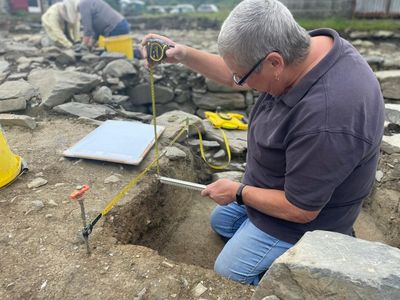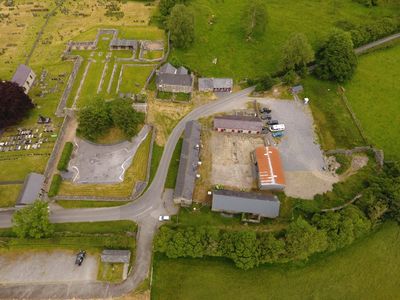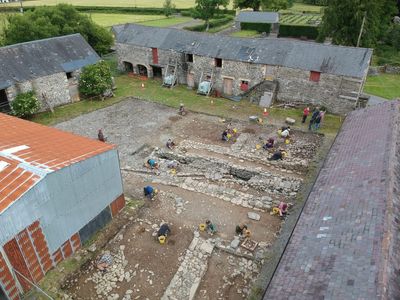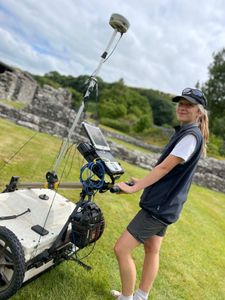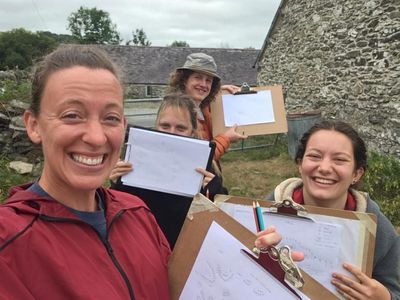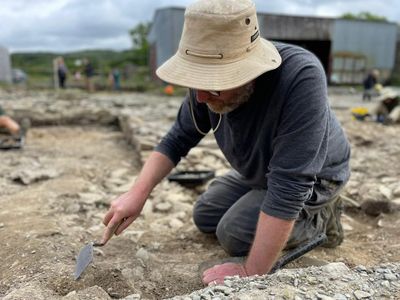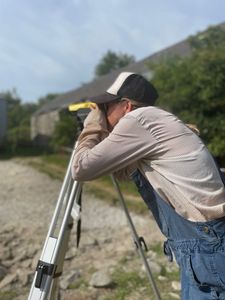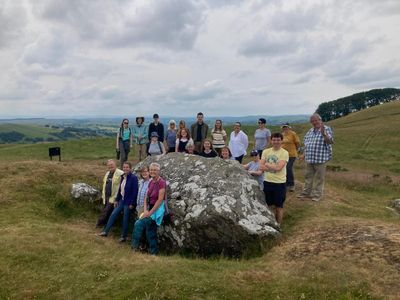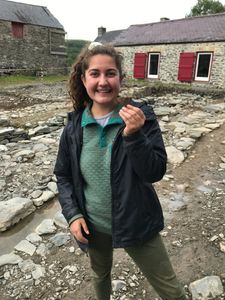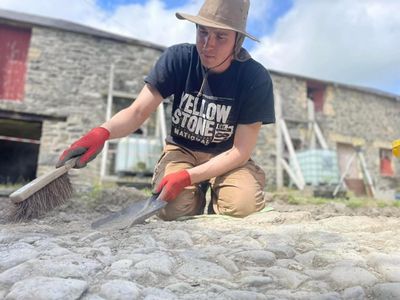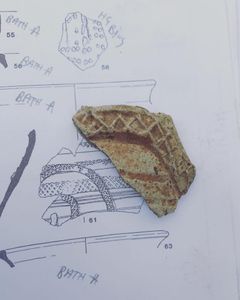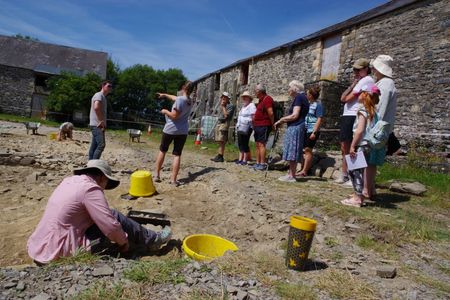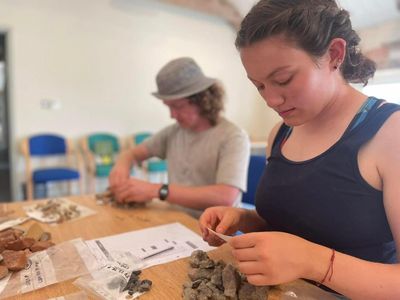INTERNATIONAL FIELD SCHOOLS N-Z
NORTH MACEDONIA
Stobi (The Capital City of Macedonia Secunda) Excavation
Dates: June 7 – July 6, 2025
Project website: https://www.bhfieldschool.org/program/stobi-archaeological-excavations
General information
Project type: Field school & archaeological excavation. The variety of activities and the team’s professionalism and flexibility make this project suitable for both beginners and advanced in field Roman Archaeology.
Site and venue: Archaeological site of Stobi is near the village of Gradsko, Republic of North Macedonia. Since 2012, Stobi is included in the World Monuments Fund Watch list among the sites with universal significance – read more here!
Period in the project’s focus: Roman, Late Roman (2nd century – 6th century CE)
Major field school topics/activities: archaeological field techniques and methods for excavation and documentation in regard to specifics of excavation of Roman and Late Roman urban site; course on photogrammetry and 3D archaeological recording and modelling in collaboration with Queen’s University, Canada; finds processing; as well as excursions to significant heritage sites in Republic of North Macedonia and Greece.
BHF Partners in this project:
National Institution Stobi, Republic of North Macedonia;
Department of Geography and Planning of Queens University, Canada
New Bulgarian University, Bulgaria.
Dig directors: Dr Silvana Blazevska (archaeologist and director of National Institution Stobi) and Goce Pavlovski (archaeologist at National Institution Stobi, PhD Candidate in Archaeology)
Field school coordinators: Angela Pencheva (Balkan Heritage Foundation & Field School Program Director, PhD in Classical Archaeology) & Matthew Schueller (BHF affiliated archaeologist; visiting Asst. Prof. at William and Mary, USA); Goce Pavlovski (archaeologist, NI Stobi, PhD Candidate in Archaeology);
Visiting professor: George A. Bevan (PhD), Associate Professor, Department of Geography & Planning, Queen’s University, Canada.
The Site and the Excavation Project
The ancient city of Stobi was the largest city in the northern part of the Roman province Macedonia, later capital of the province Macedonia Secunda and important urban, administrative, trade and religious center during the Roman and Late Roman periods. Located at a strategic position at the intersection of the two main roads – the north-south road (Thessalonica-Stobi-Singidunum) and the diagonal road (Heraclea-Stobi-Serdica), the town possessed all preconditions for greater rise and development.
First historical records for Stobi are found in Roman historian Titus Livus, who recorded the Paionian urbs vetus Stobi as а place close to the battleground where Macedonian King Philip V defeated the Dardanians in 197 BCE. The same author reveals that in the period after 168 BCE, when the Romans conquered the Macedonian kingdom, Stobi entered the fourth meris, and became a trade center from where salt was distributed to the north, to Dardania. When the Roman province of Macedonia was established in 147 BCE, Stobi was the largest city in the northern part.
Roman period: Trade and its strategic position allowed for Stobi’s continual rise in the following centuries of Roman rule. Pliny recorded Stobi as oppidum civium Romanorum, a status gained during the time of Augustus meaning that there must be a community (conventus) of Roman citizens who possessed ius Italicum, besides the local population and other foreigners. The citizens who enjoyed Roman civil rights belong to the tribes Aemilia and Tromentina.
Stobi became a municipium, a status which appeared on the first coins minted in Stobi by Vespasian in 72/73 CE, and on a few inscriptions dated in the period between 1 st and 3rd century CE. The imperial mint at Stobi, with interruptions, lasted until the time of Caracalla (198-217 CE). The town suffered in the second half of the 3 rd century, due to the invasions of the Goths and Herules in 267/69 CE, and later, around the year of 300 CE, by an earthquake. These events, along with the general crisis in the Roman Empire caused a decline of the prosperity of Stobi.
Few public buildings from this period are partially uncovered at the site: the Theatre, the House of Polycharmos with the northern part adapted to a Synagogue, the Temple of the Egyptian deities Isis and Serapis, the Building with Arches (the Library), and partially uncovered urban villa named Casa Romana, located close to the Erigon River. The grand architecture, the manner of building and the used materials along with the magnificent marble, stucco, painted and sculptural decoration attests to a city where not only local prominent families but some of the emperors themselves counted among its benefactors.
Late Roman period: The large reconstruction of the city occurred during the 4th and especially in the 5th century. Since Emperor Constantine issued the Milan Edict in 313 CE which made Christianity equal to the other religions, many cities throughout the Empire became bishop’s seats, including Stobi. Budios was the first recorded bishop in Stobi, who participated at the First Ecumenical Council in Nicaea in 325 CE. Besides Budios, six other bishops from Stobi are recorded in the sources or inscriptions.
In 388 CE, Emperor Theodosius visited Stobi and issued two edicts while there. When a new provincial division was carried out in 386 CE, Stobi probably remained in Macedonia Prima, and later in the 5th century it became the capital of the newly formed province of Macedonia Secunda. Ancient sources mention eight cities within the province and Stobi was mentioned as first. In 447 CE Stobi and seventy cities or towns on the Balkans suffered in the raids of the Huns, while king Theodoric and the Ostrogoths plundered Stobi on their way to Dyrrachium in 479 CE.
Most of the excavated buildings and fortifications at Stobi are from Late Antiquity, and were erected between the 4th and 6th century. A new inner fortification wall was built on the eastern side in the early 5th century, thus shrinking the city’s territory. Some of the existing houses were renovated and more large residences were built with many rooms organized around the central inner courtyard with fountains and pools, lavishly decorated with mosaics and rich architectural marbles: the House of Parthenius, the Theodosian Palace, the House of Peristeria, the so called Casino, as well as two public baths and the city fountain among them. The buildings were divided by streets, some of them paved and colonnaded.
Christianity largely shaped the urban layout of the city. The Early Episcopal basilica was built in the late 4th century, renovated by bishop Eusthatios in the early 5th century. In the late 5th century a new, larger Episcopal basilica was built on an artificial terrace, 4.5 meters above the Early church. Three more basilicas are known from the second half of the 5th century within the city walls (North basilica, Civil basilica, Central (Synagogue) basilica and three outside the fortification: the Cemetery basilica, Basilica Extra Muros and Basilica in the village of Palikura, 2km southeast of Stobi.
The earthquake in the early 6th century damaged many of the buildings. Major repairs and rebuilding is recorded on the public and residential buildings as well as on the fortification. The incursions of the Slavs and Avars and other tribes from the north during the second half of the 6th century devastated the cities throughout the Balkans. In addition, the bubonic plague during Emperor Justinian’s reign caused a decline of the population as well as climate changes in the second half of the 6th century until the final abandonment of the city in the first decades of the 7th century. The city was probably hit by another earthquake shortly before or after it was abandoned.
Medieval period: The last historical records mentioning Stobi refers to the victory of the Byzantine emperor Basil II over the military garrison stationed in Stobi in the year of 1014. During the Medieval period (11th – 14th centuries) a small settlement existed, judging by the remains discovered in the southeast part of the city, around the Temple of Isis and in the corridors of the abandoned theater, while the small cemetery was found above the remains of the Civil and Central basilica. In the following centuries Stobi vanished into oblivion until it was discovered in the second half of the 19th century.
Periods of excavations:
For more than a century the ancient city of Stobi has been attracting scientists from all over the world to reveal its secrets.
The first reported excavations were begun during the World War I by German officers and the archaeologist Hald and later on Krischen;
1923 to 1940 – Excavations, directed by Balduin Saria and R. Eger, Kj. Truhelka, V. Petkovic, J. Petrovic, Dj. Mano-Zissi – the Belgrade National Museum;
1955 to 1969 – Excavations carried out by the Archaeological Museum of Skopje and the Agency for Protection of Monuments of Culture, Macedonia;
1970 to 1980 – Excavations, directed by Dj. Mano-Zissi and J. Wiseman – the Museum of Veles, Macedonia, University of Austin, Texas, and later Boston University – both from USA.
1992 to 1995 – rescue excavations by the Agency for Protection of Monuments of Culture, Macedonia;
The National Institution Stobi (NI Stobi) was founded in December 2008 as an independent governmental institution under the Ministry of Culture. The large-scale excavations conducted by S. Blazhevska (NI Stobi) began in 2009. Until 2025 numerous archaeological and conservation projects were successfully finalized (for more information, see: www.stobi.mk).
Despite all the excavation campaigns, only 15% of the territory within the city wall of Stobi has been excavated.
FIELD SCHOOL HISTORY (2010 – 2025)
In 2010, the field school project concentrated at two places: the Western Necropolis, in use from the 1st century BCE to the 5th century CE and the temple of Isis dated to the 2nd and the 3rd century CE.
In 2011 and 2013 the field work took place in the Northern Residential Area of Stobi, inhabited mainly in Late Antiquity.
Since 2014 the participants in the field school excavate an area next to one of the most representative residential buildings in Stobi: the Theodosian Palace located at the center of the city, bordered by two main streets: Via Principalis Inferior and Via Principalis Superior. The building, which is richly decorated with mosaics, was given its name by early scholars under the assumption that the Emperor Theodosius I was accommodated there during his visit to Stobi in 388 CE.
The excavations in the last six years brought to light a late antique building situated between the Theodosian Palace and an adjacent building, called “the Jail” due to the discovery of shackled skeletons in the 1920s. In 2025, the work will continue in the same area in an effort to investigate the chronological and architectural relation between the three buildings.
The field school includes the following three modules:
- Fieldwork, including excavation of Roman and Late Roman layers and structures: practicing basic excavation techniques and developing of archaeological field documentation by maintaining a field journal on a daily basis, filling locus sheets and labels, drawing an elevation plan/ a ground plan/ a cross-section, 3D positioning of finds, taking coordinates with a dumpy level, as well as taking photographs at the site;
- Lectures and workshops in Roman and Field Archaeology, Finds’ Processing and Documentation; workshops on Photogrammetry & Surveying for Archaeological and Architectural Recording alongside the excavation, taught by Dr. George Bevan (Queen’s University, Canada). Further training will be given in the operation of a Total Station and the establishing of a survey control network on site;
- Excursions to to the old towns of Bitola, the archaeological site of Heraclea Lyncestis as well as to Ohrid and Ohrid lake(UNESCO World Heritage Site), Skopje and to the ancient Macedonian capital Pella and the royal burial complexes in Vergina (UNESCO World Heritage Site) in Greece (optional, not covered by the reimbursement payment).
NORTH MACEDONIA
2025 Amzabegovo, North Macedonia: Neolithic Transition to Farming Practices (RW8X+CV Dolno Crnilishte, North Macedonia)
Dates: July 5 to July 26, 2025.
Application link: https://cfs.embark.com/login/apply?target=2025
Project website: https://www.fieldsciences.org/program/2025-n-macedonia-amzabegovo/
2025 Syllabus can be viewed at https://www.fieldsciences.org/wp-content/uploads/2024/12/Syllabus-N-Macedonia-Amzabegovo-2025.pdf
OVERVIEW
During the 7th millennium BCE, the Balkan Peninsula served as a gateway for the spread of farming, animal husbandry, and Neolithisation from Anatolia and the Near East to Europe. The central Balkan River valleys, including the Vardar and Bregalnica, were among the most significant migration routes during this period. Amzabegovo, situated between these two river basins, encapsulates nearly two millennia of Balkan Neolithic development. The site was occupied 6,300 to 4,800 BCE, encompassing the era from the arrival of the first farmer settlers to the advent of metallurgy. Amzabegovo features a sequence of over 20 construction phases, including residential structures, pits, public buildings and burials. The site was abandoned at the end of the Neolithic until the Roman era, when a Roman villa was built on its top, sealing and preserving the Neolithic layers.
再保险
Project Director: Dr. Darko Stojanovski, Austrian Archaeological Institute
Researcher at the Austrian Archaeological Institute & Assistant Professor at the Goce Delchev University in Shtip
PERU
EL CAMPANARIO ARCHAEOLOGICAL PROJECT. HUARMEY – PERU (BIOARCHAEOLOGY AND ARCHAEOLOGY FIELDWORK)
Dates: June 9 to Aug 15, 2025
Project website: https://ecaphuarmey.wixsite.com/elcampanario
OVERVIEW
El Campanario Archaeological Project
The objectives of the El Campanario Archaeological Project in 2025 will consist of the analysis of human remains and artifacts from the cemetery, as well as the excavation of the adobe platform. Participants will learn excavation methods, mapping, profile drawing, recognizing cultural layers of occupation, identifying human remains, and recovering and identifying various archaeological materials such as pottery, stone tools, textiles, animal bones, seeds, and sea shells. During the laboratory work portion, participants will learn artifact classification, botanical analysis, pottery analysis, and textile analysis.
El Campanario Archaeological Project will offer two separate fieldwork sessions:
Bioarchaeology Session (June 9th – July 11th)
The bioarchaeology session will consist of excavating the pre-Hispanic cemetery at the site of CuzCuz. Previous excavations at this site uncovered burial contexts containing various types of artifacts, such as ceramics and textiles. Students will learn excavation methods, mapping of burial contexts, recording of artifacts, identification of human remains, ceramic analysis, paleopathology, and estimations of sex, stature, and age.
Archaeology Session (July 14th – August 15th)
The archaeology session will consist of the excavation of Platform 1 at the site of El Campanario. Platform 1 is a mud brick structure containing plastered walls and patios. Previous excavations at the site uncovered corridors and enclosures along with ceramics, wooden objects, and textiles. Students will learn excavation methods, mapping, recording of artifacts, material analysis (ceramic and textiles), osteology, and curation of artifacts.
Program Cost: 2.700 US dollars
What the cost includes: pickup at Lima airport, accommodation in Lima and Huarmey, transportation from Lima to Huarmey and from Huarmey to the site, 3 meals a day for 6 days a week (5 weeks) in Huarmey, field trip to Caral (Supe Valley), Pañamarca and Sechin. What the cost does not include: Airfare, meals while in Lima, weekend meals in Huarmey, academic credits and travel insurance, and other personal expenses.
Living accommodations will be in the city of Huarmey, which is about a 15 minute drive to the El Campanario archaeological site. Be advised that living accommodations will be basic in that the locale will have running water and electricity; internet connectivity may not be guaranteed but there are ample internet cafes located throughout the city of Huarmey.
To learn more click here
Contact: Dr. Jose L. Peña (Project Director)
721 S. Adanirom Judson Ave. Corona de Tucson, AZ, 85641
Email: ecaphuarmey@hotmail.com
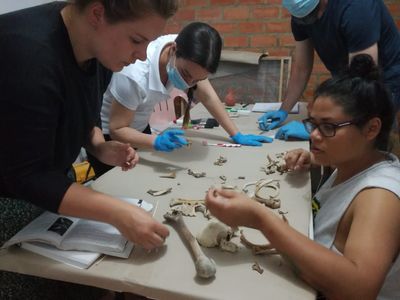
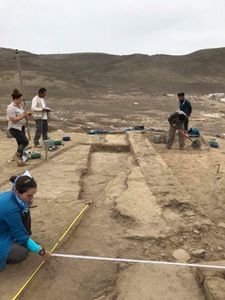

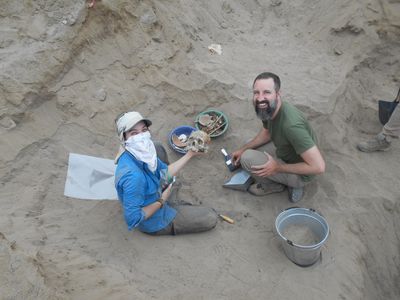
PERU
PIARA ARCHAEOLOGICAL FIELD SCHOOL (Andean Highlands, PERU)
Dates: June 14 – July 10, 2024
Program Website:https://www.piaraperu.org/fieldschool.php
Full program details can be found here
OVERVIEW
What You Will Learn
Archaeological Research Practices. The course is an intensive learning experience that provides detailed training in a variety of important methods used in archaeological investigation.
Through both targeted training and daily practice, students will learn how to properly lay out excavation units, draw plan maps and profiles of stratigraphic and architectural features, and digitally record and visualize data using iPads in the field. Students will also attend workshops or perform labwork in GIS and 3D Photogrammetry, artifact processing, analysis, and illustration, total station mapping, and human skeletal analysis.
Students will also attend weekly lectures and discuss readings about Andean prehistory. Hualcayán is an exceptional archaeology site for learning archaeology and the Andean past because it was occupied for nearly 4000 years in prehistory. This means that students will encounter the buildings, stratigraphic layers, and artifacts for seven cultural periods and their sequential civilizations or traditions, namely Kotosh (3000–900 BC), Chavín (900–500 BC), Huarás (300 BC–AD 100), Recuay (AD 100–700), Wari (AD 700–1000), and Akillpo (AD 1000–1500, spanning both before and after being integrated into the Inka empire.
Community Collaborations. Working with the local and descendant community of Hualcayán and incorporating their needs and interests is a priority of the PIARA research project, which also makes it an important part of the student experience. Students will live in this rural Andean community and not be isolated from local people in their daily endeavors: young adults and adults from Hualcayán as well as Peruvian students from the Universidad Nacional de Ancash – Santiago Antúnez de Mayolo (Huaraz, Ancash, Peru) will work alongside us, which provides a robust intercultural learning experience. In this pursuit, students learn how to ethically and respectfully conduct research on the remains of other people’s heritage by collaborating with them as well as through targeted discussions with project and community members alike.
Beyond daily tasks, students will also contribute to heritage, education, or wellness-focused projects in the Hualcayán community. At minimum, all students will spend the equivalent of one full day (six to eight hours) working on these projects. The details of this work will depend on the community’s expressed needs and may include doing educational activities in the school, implementing projects in the community museum, cleaning up trash, painting buildings, assisting in a harvest, cataloging donated library books, or working with PIARA to prepare or host heritage-focused events.
All students will receive six credit hours from the hours from the Universidad Nacional Santiago Antúnez de Mayolo for successfully completing the course.
We invite you to explore the exciting Andean past, learn advanced archaeological methods, and experience traditional Andean culture at Hualcayán with us this summer!
How to Apply Details coming soon!
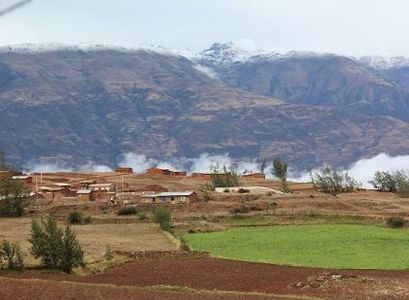
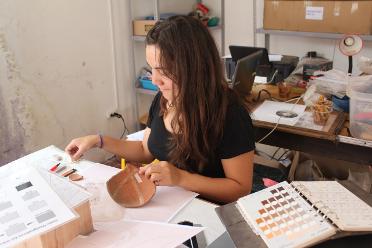
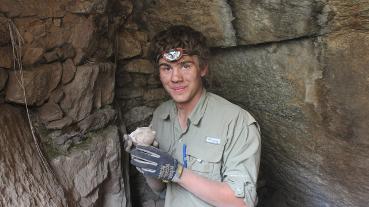
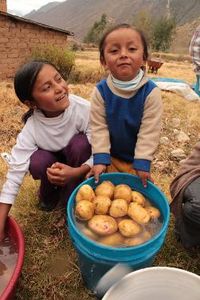
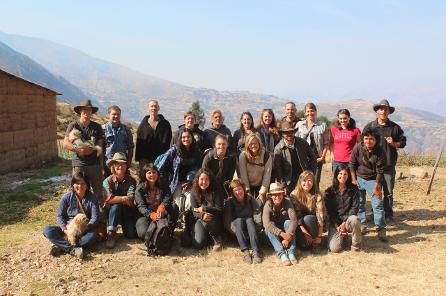

PERU
HUARI-ANCASH BIOARCHAEOLOGICAL RESARCH PROJECT (Huari, PERU)
Project Dates: Season 1: June 1-22, 2025 Season 2: June 29 to July 19, 2025
Program website: http://www.proyectohuariancash.org/projects.html Field School Application: click here
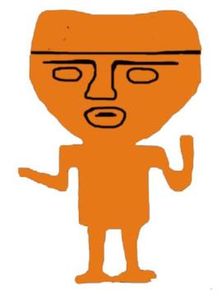
Welcome to our Field School!
The time of this field school is well organized so that participants engage in different aspects of the project: survey, excavation, and lab. The goal is providing the basis of archaeological work and give an overview about what means to become an archaeologist. We lecture a lot during the first few days and cover a lot of ground even for those who have no previous experience in excavation (especially working with human remains). This makes our field school a bit different perhaps; students do get a rich theoretical background before the excavations start as well as during the excavations so that theory and practice blends into a whole thus making sure the participants get connected with the work and the area and have a wholesome understanding of the research.
It is important to keep in mind and, hopefully, to look forward to, that that the project takes place in a very rural area. You may travel to Peru and never really get the taste of life in deep provincial areas which truly are a world to themselves. Huari is such a town. It is surrounded by mountains, it is deep in the mountains. Life is simple, and time passes by very differently here. There still a lot of authenticities and lots of sightseeing. People are friendly, and they love visitors, and we on our end expect the participants to respect what is new and VERY foreign to them.
The field conditions are different than those you experience in your home or university. Archaeology in the Andes is a hard, cold, physically exhausting, dirty, and demanding activity. When deciding to work in this part of the world it is important to understand that learning to deal with very different circumstances at hand is a crucial part of participation in the project and to make the best of a given situation with the tools available. This is not a summer vacation although we promise you will have a great time. And on our end, we expect all members of our project to be patient, upbeat, flexible and prepared.
We hope you are up for the challenge to learn and discover and look forward to meeting you this coming summer.
Our field school aims to provide participants with knowledge about how archaeologists work in the field. We understand that archaeologists do not always do research (academia) and that the vast majority work in CRM (Cultural Resource Management). The field school is designed in such a way that students progressively learn each stage of archaeological work. To this end, we work at several archaeological sites with different configurations that allow them to develop skills in multiple situations.
During the first week, as part of the acclimatization process to the altitude (since Huari is at 3150 meters above sea level), we give lectures on the first two days about: project objectives, research methods, and background in Andean and regional archaeology. Next, we begin explorations at various sites in the valley, where students explore an area in order to identify and differentiate elements human-made or nature. During the explorations, students acquire knowledge of how to set up test pit grids, either individually or aligned over several tens of meters, as well as how to fill out registration forms. Other sites allow students to gain experience in recording architecture or other elements, such as roads and canals. A total of 4 sites are explored, whose complexity and chronology vary (1000 BC – 1500 AD). One of these sites corresponds to the Incas; students will be able to hike along the Inca royal road and examine the complex architecture of this civilization.
The second week is full excavation, by then students are familiar with recording and drawing techniques, which makes the work easier. Most of the excavations are in funerary contexts. Finally, the third week is dedicated to material analysis, an introduction to the analysis of ceramics, lithics and bones is provided, as well as recording and cataloging of recovered material.
BACKGROUND to the Huari-Ancash Bio-Archaeological Research Project
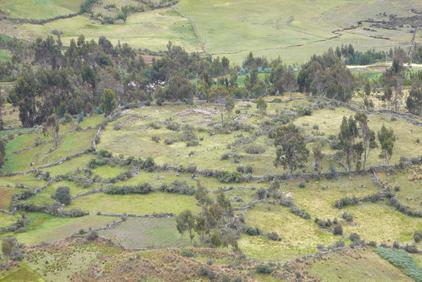 The study of burial patterns constitutes an important component of the examination of the ancient political organization and social identity. I believe that the study of tombs and their relationship to the landscape permits a discussion of how ancient peoples perceived the dead, as well as inform archaeologists about ritual practices. Burials can shed insight on those rituals and their relationship with the political and social organization by associating the type of tombs to large-scale modifications in public and ceremonial architecture.
The study of burial patterns constitutes an important component of the examination of the ancient political organization and social identity. I believe that the study of tombs and their relationship to the landscape permits a discussion of how ancient peoples perceived the dead, as well as inform archaeologists about ritual practices. Burials can shed insight on those rituals and their relationship with the political and social organization by associating the type of tombs to large-scale modifications in public and ceremonial architecture.
欧
COMPONENTS OF THE FIELD SCHOOL:
The Field School is focused on three aspects of research, and we follow different techniques in the field and lab, they are organized in such a way that students get familiarized with archaeological techniques.
我们
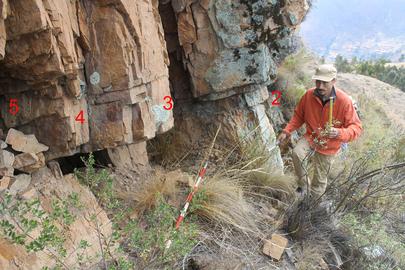
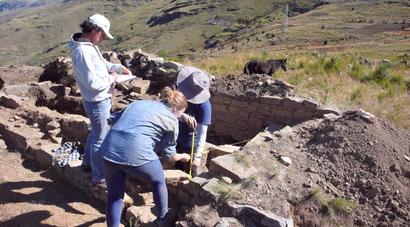
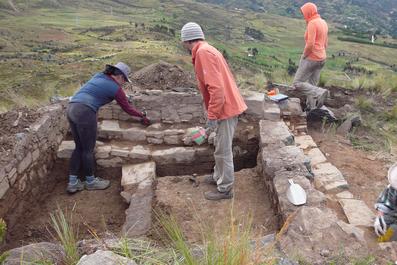

POLAND
FIELD SCHOOL IN MORTUARY ARCHAEOLOGY POLAND 2024
Dates: Session I: June 24 to July 17, 2024
Session II: July 18 to August 10, 2024
Project website:http://www.slavia.org/fieldschool_new.php?go=fieldschool Request the Summer 2022 project info packet here
In the summer of 2024 we offer an intensive learning experience in human osteology and mortuary archaeology at the medieval inhumation burial grounds in Giecz and Gać. All students get involved in the fieldwork, receiving hands-on experience in the excavation of human burials and related archaeological features from their discovery to final removal. The Field School includes a strong laboratory component which provides an opportunity to practice identification of complete and fragmentary human skeletal remains.Read more
Participants will receive training in:
- Adult and Juvenile Osteology
- Human Burial Excavation
- Bioarchaeology in Practice
- Early Medieval Funerary Practices in Poland
- Archaeological Field Research Techniques
- Archaeological Material Processing and Curation
The Mortuary Archaeology Field School provides a unique opportunity for archaeology and bioarchaeology students, as well as future practitioners of forensic sciences and anyone interested in mortuary archeology, to learn recovery and documentation techniques on both archaeological and human remains. The language of the project is English. Academic credits are available.
In the summer of 2024, we offer seven weeks of bioarcheological exploration and practice at two medieval sites in Poland. The program is divided into two sessions:
- June 24 – July 17, 2024
- July 18 – August 10, 2024
The application deadline is rolling until ALL SPACES ARE FILLED. The number of places is limited.In order to get the Information Packet and the Application Formplease visithere.
Slavia is a non-profit organization dedicated to encouraging and supporting archaeological research in Poland. Through the Slavia Project we offer opportunities for volunteers and students to participate in current archaeological excavations, learn archaeological techniques, and explore details of Polish history that are yet unknown. Poland’s rich history provides a treasury of information about people, cultures, and events of the past.
Based at the Museum of the First Piasts at Lake Lednica, Poland, the Slavia Foundation carries on archaeological projects in cooperation with Adam Mickiewicz University in Poznań. We provide an opportunity for international students to gain experience in many aspects of prehistoric and medieval mortuary archaeology. A no less important goal of this project is to introduce our guests to Polish culture and history by interacting with locals and through educational tours and lectures.
The First Piasts Museum at Lednica is one of the largest open-air museums in Poland. It administers and protects Lednica and Giecz, two jewels of early Polish history (10–11 c. AD). A variety of research is conducted here in cooperation with the leading academic center of Adam Mickiewicz University in Poznań making the Museum a remarkable educational institution.
Slavia Project

 The Slavia Summer Field School in Archaeology began in 1998 in the Lednica region as a joint project of scholars from Adam Mickiewicz University, First Piasts Museum and Slavia Foundation. From the start the project was directed to international students seeking archaeological adventure in Poland. It initially offered experience in the Lednica region which included excavation of a medieval, wooden bridge abutment on Ostrów Lednicki island as well as a medieval cemetery in Dziekanowice.
The Slavia Summer Field School in Archaeology began in 1998 in the Lednica region as a joint project of scholars from Adam Mickiewicz University, First Piasts Museum and Slavia Foundation. From the start the project was directed to international students seeking archaeological adventure in Poland. It initially offered experience in the Lednica region which included excavation of a medieval, wooden bridge abutment on Ostrów Lednicki island as well as a medieval cemetery in Dziekanowice.
In the year 2000 the project moved to Giecz starting salvage excavations at the medieval cemetery adjacent to the remains of a local, medieval stronghold. The primary focus on exploration of medieval burials and the variety of related issues in physical anthropology resulted in the new definition of the School’s specialization. The main area of instruction offered to the students have become human osteology and mortuary archaeology and the school was re-named as the International Slavia Field School In Mortuary Archaeology (also known as the „Slavia Project”). Also the team has become international joined by scholars from Ohio State University, USA.
From 2008 the Slavia Project has become responsible for rescue excavations at the endangered archaeological site of Drawsko. The archaeological works are carried out under the name of the International Slavia Field School In Mortuary Archaeology following all its procedures. This project is a joint effort of researchers from the Museum of Czarnków, Slavia Foundation, Adam Mickiewicz University, State University of New York at Oneonta and numerous international students taking part in the School activities.
For 10 years (1999-2008) Giecz Archaeological Complex has been a training ground for many international anthropology students who tirelessly mastered their practical skills in osteology and archaeology helping out at the Slavia excavations of the 12th century inhumation cemetery, commonly known as Giecz, site 4. Since then, many of these people have successfully pursued their careers in forensic sciences, bioarchaeology, or archaeology. Some of them have become university professors.
否
The Slavia Project, Mortuary Archaeology Field School in Giecz welcomes all students wishing to gain practical experience in excavating human remains and other aspects of mortuary archaeology. We are looking forward to your input in the search for yet undiscovered secrets of this site and will be happy to work with you. As the cemetery is located on an agricultural field and is subject to destructive deep plowing, your work will not only give you hands-on experience, but also the satisfaction of conserving and protecting an exceptional historical site. At the moment, the only way to preserve this unique treasure of Polish heritage is to meticulously investigate and document it. We hope you will help us to get this job done.
Contact the project for additional detailshere

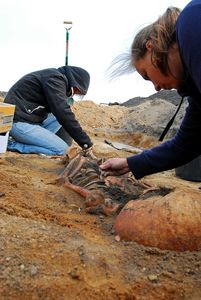
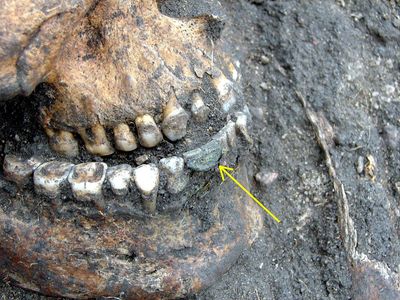
PORTUGAL
CASTELO DE CUNCOS ARCHAEOLOGICAL PROJECT, PORTUGAL
Dates: May 4 to May 31, 2025 Application Deadline: April 4, 2025
Project details can be found here
OVERVIEW
Applications are now open for the seventh season of fieldwork at Castelo de Cuncos, an Iron Age/Roman Republican walled settlement located in the Central Alentejo
Castelo de Monte Novo (known locally as Castelo de Cuncos) is a large Iron Age/Roman Republican era settlement located in the Central Alentejo Portugal. So far, our work has revealed a substantial fortified settlement which appears to have been abruptly abandoned in the Late Roman Republican Period (1st Century BCE). Burned outer walls and the discovery of Roman weaponry during excavation suggests evidence of conflict. For the 2025 summer season we will continue excavation and hope to gain a better understanding of the site from its Iron Age origins until its likely violent end during the Roman Republican period.
Students will receive instructions in various archaeological methods such as excavation and surveying techniques, the processing and handling of artefacts, and the recording and illustrating of exposed areas. Prior experience in archaeology is not required. Both undergraduate and postgraduate students and volunteers are welcome.
Tuition for the 4-week session (including room, board, and transportation within Portugal) is $1900 USD (May 4-31) [Some flexibility is possible within these dates, please contact us to see what is possible]
Field School Activities
Excavation Techniques
Students will gain experience in all aspects of the archaeological process. The most obvious of which is the actual excavation of material from the ground. Students will learn proper excavation techniques using tools such as pick axes, shovels, hand axes, and trowels. Students will directly participate in digging and learn how to identify various materials such as pottery, bone, and metal fragments.
Handling and Processing Artefacts
Following the work in the field, students will take part in the cleaning and sorting of the finds from the day. Interested students may also work directly with our conservator to learn conservation techniques relating to pottery and metal objects. Depending on the volume of material to be conserved, some students will also have the opportunity to divide their time between the conservation lab and the field.
Archaeological Drawing and Recording
Apart from the actual digging itself, students will also learn how to properly record the excavation through archaeological drawings. Students will learn how to record stratigraphic layers and archaeological features and take elevation readings during the excavation.
Survey
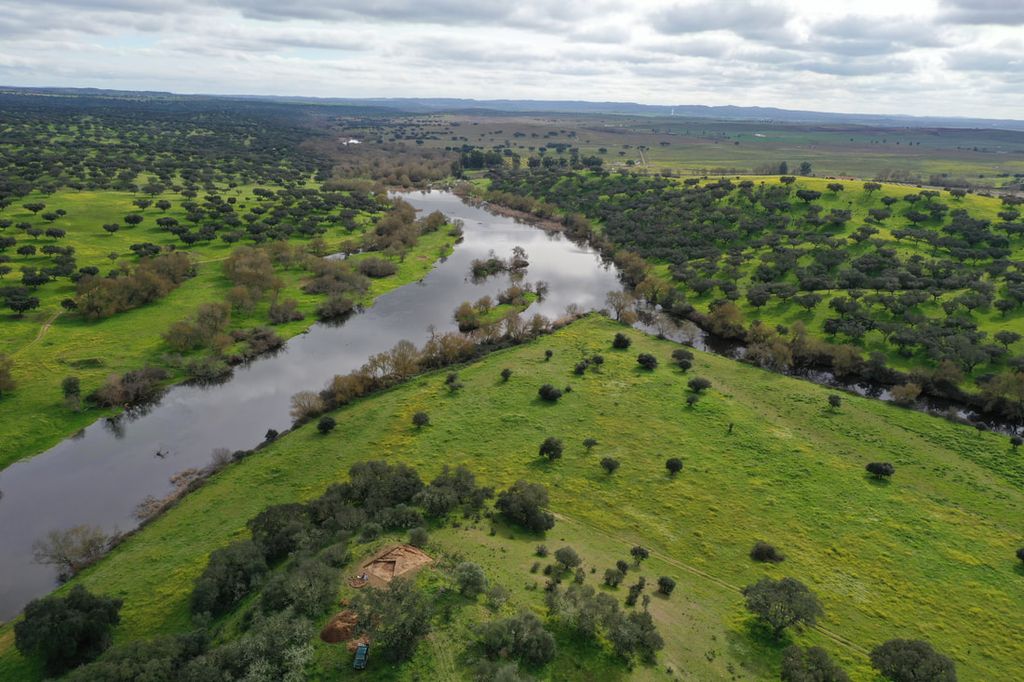 Due to the size of the settlement, students will have the opportunity to participate in a surface survey of the area and its surrounding landscape. During the 2019 season, a metal detection survey was conducted around the settlement’s walls. Due to promising results, we plan on continuing this survey in addition to the excavation work.
Due to the size of the settlement, students will have the opportunity to participate in a surface survey of the area and its surrounding landscape. During the 2019 season, a metal detection survey was conducted around the settlement’s walls. Due to promising results, we plan on continuing this survey in addition to the excavation work.
On the weekends, we typically visit local archaeological sites and museum throughout the Alentejo. These trips can range from visiting Roman Villas or Medieval Castles to nearby historical cities such as Evora, Beja, and Merida. These trips can be a great way to learn about some of the local history of the area, or to just lounge about and be a tourist. On some afternoons, we will also visit local sites in Redondo itself and the surrounding area.
Application Process:http://www.castelodecuncosproject.com/application.html

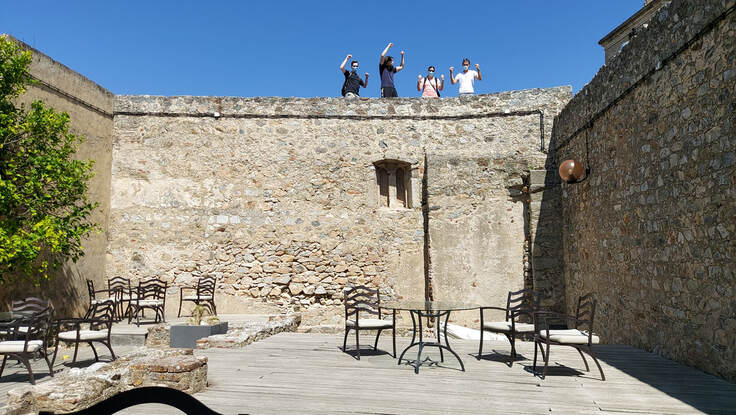
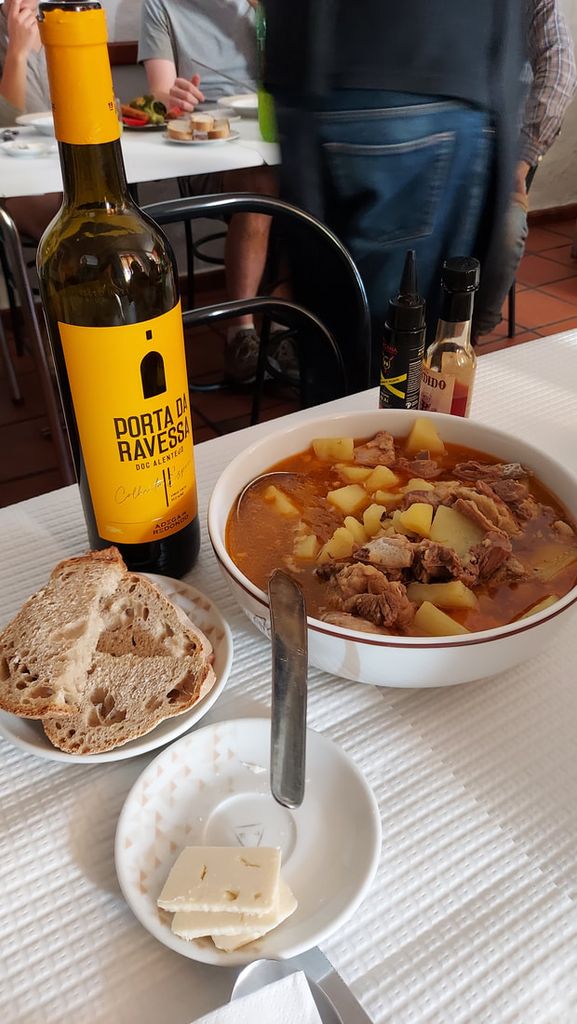
PORTUGAL
PORTUGAL FORENSIC ANTHROPOLOGY/BIOARCHAEOLOGY FIELD SCHOOL, SUMMER 2024
DATES: Summer 2024 (Contact the program for exact dates)
Application deadline: January 28, 2024 Application link click here
Program Website (Simon Fraser University)
Program Overview
 The Simon Fraser University Department of Archaeology is pleased to offer a lab-based field school focusing on the curation and lab analysis of human remains from archaeological and forensic contexts. Students will be traveling to three locations in Portugal for training and hands-on lab experience in the preparation, analysis and interpretation of forensic and archaeological human remains. At these locations students will have the opportunity to visit forensic and educational organizations as well as historically and culturally significant sites. The first week will be spent in the town of Gandra, nearby Porto, where students will receive basic osteological and forensic training and will visit the morgue and other forensically relevant locations. The second and third weeks will be spent at the Municipal Museum of Santarem and the University of the Algarve respectively, where they will attend labs to learn and practice various bioarchaeology lab techniques, lab processing and conservation of archaeological human remains.
The Simon Fraser University Department of Archaeology is pleased to offer a lab-based field school focusing on the curation and lab analysis of human remains from archaeological and forensic contexts. Students will be traveling to three locations in Portugal for training and hands-on lab experience in the preparation, analysis and interpretation of forensic and archaeological human remains. At these locations students will have the opportunity to visit forensic and educational organizations as well as historically and culturally significant sites. The first week will be spent in the town of Gandra, nearby Porto, where students will receive basic osteological and forensic training and will visit the morgue and other forensically relevant locations. The second and third weeks will be spent at the Municipal Museum of Santarem and the University of the Algarve respectively, where they will attend labs to learn and practice various bioarchaeology lab techniques, lab processing and conservation of archaeological human remains.
Important notes:
- Information Session: Friday, January 19, 2024 at 11:30am in Saywell Hall 9152
- Application Deadline: January 28th, 2024 at 11:59pm PT
- Field School Director: Dr. Hugo Cardoso, hcardoso@sfu.ca
- An academic reference is required for this program
- Visiting Undergraduate students are welcome.
- See application instructions here.
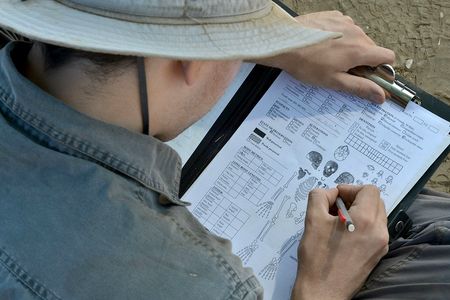
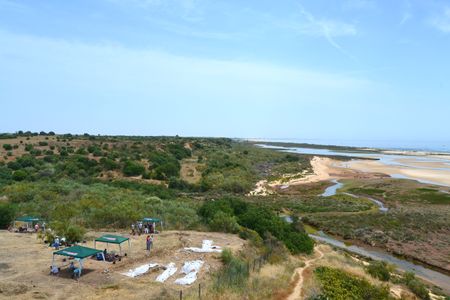
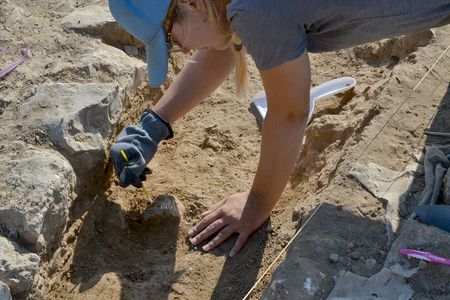
PORTUGAL
Castelo Velho de Safara Archaeological Project (Safara, Moura, Portugal)
Project Dates: January 5 to Feb. 2, 2025
Project website: http://www.swarchaeologydigs.com/cvs.html
Castelo Velho de Safara is located in the south of Portugal, at the confluence of the river Ardila and the stream of Safareja. Positioned on a hilltop in a commanding position, it was designed with defensive walls and three ditches.
Despite being known to archaeologists since the 1940s, the first systematic excavations in Castelo Velho de Safara started in June 2018. Based on surface pottery evidence and material recovered from recent excavations, the site was dated from the Chalcolithic (3rd millennium BC), to the Late Iron Age (4th century BC), and the Roman Republican Period (1st century BC).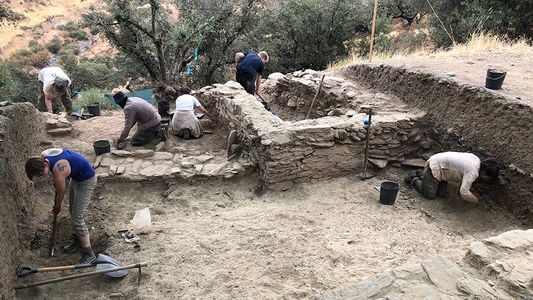 Thus far, excavations have exposed a street running parallel to the defensive wall. The latter has some orthogonal compartmental structures associated to its interior whose function is still uncertain, but it is most probably related to storage activities. On the opposite side of the street, a longitudinal structure was identified. It is better constructed and seems to be associated with a residential area. The residential area could be divided according to status, and evidence of metal working on site is confirmed. Castelo Velho de Safara might have served as a trading post with important connections to the nearby mines of copper and silver, and with manufactured products from the Eastern Mediterranean.
Thus far, excavations have exposed a street running parallel to the defensive wall. The latter has some orthogonal compartmental structures associated to its interior whose function is still uncertain, but it is most probably related to storage activities. On the opposite side of the street, a longitudinal structure was identified. It is better constructed and seems to be associated with a residential area. The residential area could be divided according to status, and evidence of metal working on site is confirmed. Castelo Velho de Safara might have served as a trading post with important connections to the nearby mines of copper and silver, and with manufactured products from the Eastern Mediterranean.
Field School
On site
No previous archaeology experience is required, as students will be taught about excavation methods and techniques used on site. Teaching methods will be hands-on exercises with experienced professionals instructing on a variety of topics including site safety, setting up the excavation, heavy digging and correct use of different tools (eg. pickaxe, shovel, brush), trowelling, context recording, planning, section drawing, construction of Harris Matrices, treatment of finds and environmental sampling. These skills will be taught within the process of the research dig and students are expected to participate in all aspects of the excavation process.
In the lab
All finds and environmental samples recovered from the excavation are processed each day in the field lab. Students will be taught about how to wash them correctly, sort and label finds, including ceramics, bones, seeds, metals, glass and charcoal. The most significant ceramic finds will be illustrated. Students might also be involved in a floatation programme, from sampling on site to sample processing in the lab.
Lectures and field trips
Brief lectures will be presented every week on topics relevant to the excavation. They are aimed to combine the practical experience on site with the theoretical background. Lectures are generally related with excavation and site recording methods, survey, ceramic analysis, archaeological illustration, zooarchaeology and geoarchaeology. Lecture topics might change according to lecturers’ availability.
Field trips will be carried out in neighbouring towns, such as Moura, Mourão, Monsaraz, Serpa, Barrancos, also focusing on eventual nearby archaeological sites being excavated during our visit. Sandwich lunches must be prepared and brought from home for the field trips.
The first Saturday is free, and a common choice amongst the students is visiting the nearby town – Moura. No meals are provided on free days, but breakfast.
PORTUGAL
PORTO DA LAMA ARCHAEOLOGICAL PROJECT (Alcacer do Sal, Portugal)
Project dates: April 4 to April 18, 2025
Project website: http://www.swarchaeologydigs.com/pdl.html
This site has already been featured in a documentary now screening in several European film competitions. You can watch the trailer here: https://youtu.be/sy07cH4Jz5I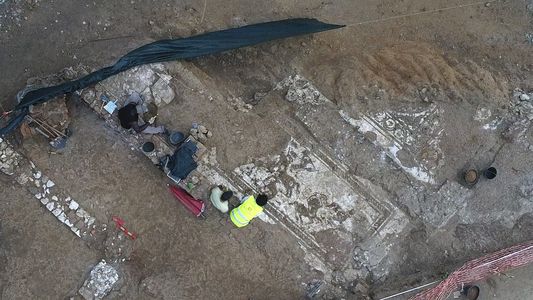
Located in central Portugal, near the Atlantic Ocean, the Roman villa of Porto da Lama maintained a close connection with one of ancient Lusitania’s most significant cities, Salacia. Linked by the Sítimos stream, which likely served as a channel for cultural exchange and influence, this strategically situated villa revealed at least three remarkable mosaics adorned with mythological and maritime themes at the heart of its domus, or landowner’s residence.
Though initially identified in the late 1940s, the site underwent partial excavation only in the emergency context of Spring 2023. This excavation uncovered the social section of a domus, featuring a foyer (vestibulum), an entrance hall (atrium), a dining room (triclinium) and the master’s study (tablinum).
Several structures and surface artefacts extend over an area exceeding 10,000 m². Our objective for the excavation season in the Spring of 2025 is to fully investigate the architecture of this affluent Roman residence and its closest dependencies.
ROMANIA
LIFE BY THE IMPERIAL ROADS: IDENTITY AND WEALTH ON THE ROMAN FRONTIER. ROMAN VILLA AND SETTLEMENT EXCAVATION, SUMMER 2024 (Rapoltu Mare, Hunedoara County, Transylvania, ROMANIA)
Dates: June 9 to August 3, 2024 (Session 1: June 9 to July 6, 2024; Session 2: July 7 to August 3, 2024)
Website:https://www.archaeotek-archaeology.org/roman-villa-excavation
Detailed syllabus from 2023 season
Application Form:https://www.archaeotek-archaeology.org/application-excavation-and-photogrammetry
OVERVIEW
The Roman conquest of Dacia, the last Imperial expansion in Europe, began in 87AD with the relatively disastrous campaigns led by Domitian and ended with Trajan’s Dacian Wars of 101/2 and 106AD. The plethora of wealth and resources the Roman Empire harnessed in Dacia (especially in Transylvania) contributed significantly to the “solvability” of the imperial economy until the Aurelian Retreat of 270AD, the funding of the construction of Trajan’s Forum in Rome being a very concrete illustration of the potential of the new province.
The mechanisms of Roman occupation of Dacia are very complex and not well understood. The Dacian aristocracy and upper classes were in continuous contact with the Roman world well prior to the final fall of the Dacian Kingdoms. These interactions took many forms, ranging from raids and limited warfare, to intensive and extensive trade, to use of Roman techniques, technologies and craftsmen.
With the defeat and “suicide” of the last Dacian King, Decebalus, in 106AD, the structures of the local social system collapsed in parts or in whole. The new Roman presence generated a dynamic and continuous process of creolization in the new province, redefining the concepts and practices of identity, wealth and class representation along Roman traditions, in theory.

However, the realities in the field are quite more subtle. First of all, the local population was still present, controlling if not the resources proper, the various technical aspects of harvesting them. Second, the new Roman population was a very diverse aggregate of ethnic groups from across the Empire, the heavy Syrian presence in Sarmizegetusa Ulpia Traiana and the many auxiliary garrisons along the various Transylvanian limes illustrating emphatically this aspect. Third, the Dacian Province presented de facto a frontier environment, constantly under pressure from foreign incursions from Germanic tribes from the north and west and the free Dacians and the Sarmatians/Scythian riders from the east.
This liminal environment generated very dynamic vectors of creolization and associated practices of identity construction. The Roman “civilizing” social constructs, based on an urbanized way of life implementing processes of alienation through technical and technological dependencies, was constantly threatened by external and internal pressures. The very rapid process of urbanization of the Dacian Provinces forced a lot of dynamic negotiation and practical creolization in the definition, construction and display of social identity and status.
This particular excavation will attempt to address these aspects of identity perception, presentation and representation. Our site is situated half way between Sarmizegetusa Ulpia Traiana and Apulum, the two most important cities of the Dacian Provinces, very close to the largest gold deposits in Europe in the Apuseni Mountains, and on the main Imperial road in Dacia. Our ground penetrating radar (GPR) survey from 2015 and 2016 has revealed a rural villa of “palatial” size, unique in the Dacian Provinces, covering ca. 0.7ha of built space. Our test excavations have unearthed a rich environment, with 2 story buildings, painted walls, potential colonnades, several buildings outside the villa complex itself and a plethora of artifacts.
我们
Combined with a series of lectures covering Daco-Roman history and archaeology, material culture analysis, photogrammetry and associated hands-on laboratory and field training, this extraordinary environment and its associated monuments, with extraordinary surrounding natural landscapes and beautiful Transylvanian churches and castles, guarantees all students and volunteers with an incredible archaeological and cultural experience.
To achieve a more encompassing archaeological field experience, we encourage all our participants to consider ourMedieval Cemetery Funerary Excavationas well, for a total of 8 weeks in the field.
Scientific Directors: Dr. Andre Gonciar (archaeology@archaeotek.org) Dr. Marius Barbu (Museum of Dacian and Roman Civilization, Hunedoara, RO)
Field Directors: Dr. William Henry (ArchaeoTek) and John P. Chamness (ArchaeoTek)
Trench Director: Dr. Jamie Bone (ArchaeoTek)
Contact: Dr. Andre Gonciar (Director – ArchaeoTek / BioArch Canada) at archaeology@archaeotek.org
Web Site: https://www.archaeotek-archaeology.org/roman-villa-excavation
Application Form: https://www.archaeotek-archaeology.org/application-excavation-and-photogrammetry
ROMANIA
Rivulus Dominarum Bioarchaeology Field School in Baia Mare, Romania
Dates: July 6 to August 3, 2024
Website: https://rivulusdominarum.com/
Application Form: https://rivulusdominarum.com/Identity/Account/Register
The 14th-17th century Piaţa Cetăţii cemetery was excavated between 2012 and 2014, resulting in the exhumation of approximately 800-1200 human burials. This was a salvage excavation, necessitated by an EU-funded redesign of the town’s historical center. As a participant in Rivulus Dominarum Bioarchaeology’s 2023 Transylvanian Laboratory Project, you will play an essential role in the preliminary analysis of the Piaţa Cetăţii skeletal collection, and will learn invaluable skills in osteological preparation and analysis directly from the project’s primary investigators.
The Goal of Rivulus Dominarum Bioarchaeology’s 2024 Transylvanian Laboratory Project
- Clean the human remains and prepare them for study
- Formulate biological profiles for the 800-1200 individual burials at Piaţa Cetăţii
- Increase legibility in Complex 66, a mass grave with indications of perimortem trauma
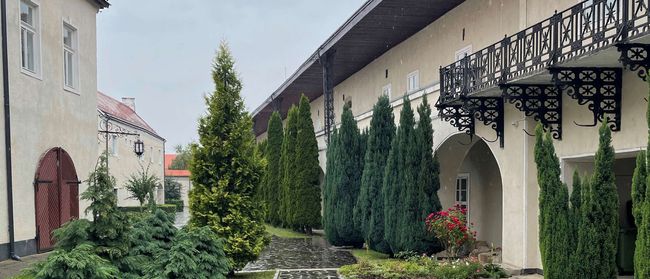 The first objective is what makes the project such a unique opportunity for its students. While you will not be excavating human remains, you will begin your work on the Piaţa Cetăţii collection at precisely the point at which excavation ceased. While most human remains in teaching laboratories have already been prepped and curated, the Piaţa Cetăţii collection is untouched. Rivulus Dominarum Bioarchaeology will teach you how to properly clean and prepare human osteological material for study. This skill-set, which is rarely developed by students outside of advanced graduate work, will familiarize you with bioarchaeological laboratory standards from the ground up.
The first objective is what makes the project such a unique opportunity for its students. While you will not be excavating human remains, you will begin your work on the Piaţa Cetăţii collection at precisely the point at which excavation ceased. While most human remains in teaching laboratories have already been prepped and curated, the Piaţa Cetăţii collection is untouched. Rivulus Dominarum Bioarchaeology will teach you how to properly clean and prepare human osteological material for study. This skill-set, which is rarely developed by students outside of advanced graduate work, will familiarize you with bioarchaeological laboratory standards from the ground up.
Once the burials are cleaned and prepped for study, you will formulate biological profiles. These estimations of age-at-death, sex, and pathology are the building blocks of bioarchaeological research. You will gain experience formulating these profiles for both well-preserved skeletons and skeletons in the more fragmentary state that is typically encountered in the field. This advanced training will situate Rivulus Dominarum Bioarchaeology students in extremely competitive positions for future employment in conservation or museum studies, and graduate work in archaeology, bioarchaeology, or other field sciences.
As a participant of Rivulus Dominarum Bioarchaeology’s 2023 Transylvanian Laboratory Project, you will receive graduate-level training in Bioarchaeological, Forensic, and Archaeological theory and methods, including new and innovative multidisciplinary research frameworks that are rarely taught in other field learning programs. You will learn:
- Theories of Mass Grave Formation
- Violence Theory
- Black Feminist Archaeology
- Queer Theory
- Decolonizing Bioarchaeology
- Bioarchaeological Storytelling
- Osteological Cleaning & Prep
- Fragment ID & Siding
- Skeletal Recording
- Age-at-Death & Sex Estimation
- Paleopathology & Skeletal Trauma
- Analysis of Commingled Remains


Rivulus Dominarum is a town of many names. When the people represented by the Piaţa Cetăţii skeletal collection called it home, the town was known as Rivulus Dominarum, which is where our project gets its name. Between the 19th century and the end of World War I, the town was known by the Hungarian name of Nagybanya. Following the end of the war and the dissolution of the Austro-Hungarian Empire, the town, along with most of Transylvania became officially part of the Kingdom of Romania. Despite reverting back to Hungarian control briefly during World War II, Transylvania remains Romanian and Rivulus Dominarum is now known by the Romanian name of Baia Mare, or “Big Mine”.
Maramureș county, where contemporary Baia Mare is located, was the metallurgical epicenter of Transylvania for almost 3,000 years. During the medieval era, Rivulus Dominarum was one of the most important Transylvanian mining towns in the Kingdom of Hungary, enjoying special privileges and social freedoms denied non-mining towns. With its long and continuous history of gold mining, the town represents an incredible opportunity to study the impact of mining and its biosocial consequences.
Th
As a participant in Rivulus Dominarum Bioarchaeology’s 2023 Transylvanian Laboratory Project, you will create biological profiles of the Piaţa Cetăţii skeletal collection. These estimates of sex and age-at-death, along with inventories of paleopathology and skeletal trauma endured by each individual, will shed light on who was experiencing the biological consequences of mining and what the social ramifications of those consequences were within the larger community of 14th-17th century Rivulus Dominarum.
ROMANIA
LOST CHURCHES PROJECT–MEDIEVAL FUNERARY EXCAVATION: LIVING AND DYING ON THE EDGE OF EUROPE
(Valeni, Hatghita County, Transylvania, ROMANIA) – 2024
Date: Session 1: June 9 to July 6, 2024
Session 2: July 7 to August 3, 2024
Full project details can be found here and a detailed syllabus here
OVERVIEW
As Europe redefines itself in the wake of the Ottoman invasion, the Carpathian frontier still holds fast against the Eastern invaders. Although Transylvanian suzerainty has passed from the Hungarian Kingdom, to the Ottomans, to the Habsburgs from the 15-17th century, its territory has never been invaded by the Turkish troops. However, the local populations lived under constant social, political, economic and religious stress. Since the Neolithic, Transylvania has been at the crossroads of European identity. During the late Middle Ages, this region goes not only through major political changes, but also through a spirituality crisis, under the pressure of Islam from the East and Protestantism from the West.
During the 18th century, several churches around Odorheiu Secuiesc have been abandoned. What is even more interesting is that those churches were removed from collective memory as well. Not only the written records pertaining to these churches were lost, but the local communities forgot about their existence.
Our excavation aims at retrieving the memory of these churches and to try to elucidate the social, political and religious context that created such an environment that would extract a church from local collective memory.
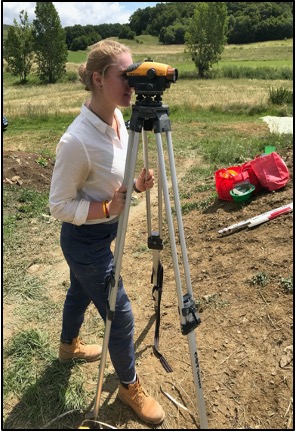
The Lost Churches Project started in 2013, with the excavation of two of these churches and associated cemeteries: Bradesti and Lueta. Concurrently, our osteology team has uncovered a very strange phenomenon within another church, at Teleac: 69 out of 70 burials were juveniles, with 49 preterm or fetal age, all of which dated to the 17th century.
In 2014, we have started exploring the environment that created this very unique skeletal assemblage, with the excavation of Teleac’ sister church in Valeni, with outstanding results We have discovered the building phases of the ecclesiastic buildings and their relationship to the deceased. Two of theses phases, an early medieval and a Gothic one have been uncovered, but the stratigraphy indicates that there is an even earlier church that we have been identified. The most surprising result of our 2014 campaign is the presence of what appears to be a migration period, pre-Christian tumulus under the church, as indicated by the burial of a horse associated with several individuals buried in fetal position.
Participants enrolled in this program will also have an opportunity to work with commingled human remains. Excavations at the Lost Church of Valeni during summer 2017 revealed an almost intact, stone built, medieval ossuary with excellent preservation, which we completed excavating in 2023.
Our excavation will deploy a bioarchaeological field approach. Within this context, we will concentrate our work on the individuals themselves and their immediate surroundings (i.e. clothing implements, jewelry, coffin and other primary funerary depositions). During one session of the excavation, we expect each participant to fully excavate approximately 2 individuals. Primary processing of the excavated remains, together with various lectures will provide our participants with the necessary training in human anatomy and morphology to be able to fully take advantage of the field experience.
To further expand their skills, several other projects are available to all our participants in osteology and bioarchaeology, as intensive laboratory research programs, respectively:
Adult Osteology Research Workshop
Juvenile Osteology Research Workshop
ROMANIA
JUVENILE OSTEOLOGY RESEARCH LABORATORY WORKSHOP (Bioarchaeology of Children): MEDIEVAL CRISIS POPULATIONS: VICTIMS OF CHANGE (Odorheiu Secuiesc, Harghita County, Transylvania, Romania)
Date: July 7 to August 3, 2024
Program details can be found here Application form: https://www.archaeotek-archaeology.org/application-bioarchaeology
OVERVIEW
Our Juvenile Osteology Research Workshop is a more advanced continuation of the Adult Osteology Workshop. The aim of this workshop is to provide participants with an intensive review of juvenile osteology and an overview of the ways in which this kind of unique information is interpreted by bioarchaeologists. During the workshop, participants will have the chance to study the growth and development of the human skeleton across various juvenile age cohorts, ranging from pre-natal to pre-adult. Most importantly, participants will have the opportunity to gain hands on experience with the analysis of exceptionally well preserved juvenile skeletal remains.
The aim of this project is to evaluate to what extent and how the major political events of the 16th and 17th centuries have impacted physically local populations, especially the children. During the 2013 season of our Osteology Workshops we uncovered a very interesting and unique phenomenon: during the 17th century, the inside of some of the churches in the region of Odorheiu Secuiesc, in the heart of Transylvania (Romania), was dedicated to infant burials. Our initial study of the church in Teleac/Telekfakva showed one adult, 69 juveniles out of which 48 were of preterm or fetal age.
During the next stage of the project, started in 2014, we started to address how the health of the children in the various cohorts, ranging from preterm to pre-adult, varies in this period of crisis. The very good preservation of the medieval osteological material and the high quality of the recovery during excavation provides a unique opportunity for a very intensive hands-on experience while working with juvenile osteological remains. This laboratory workshop session is intended for students with some previous osteological experience. Knowledge, both theoretical and practical, of the human anatomy and morphology is highly recommended.
In addition to hands-on laboratory instruction, participants will also contribute to numerous seminar discussions and hear lectures on topics related to the bioarchaeology of children. The workshop comprises daily intensive lectures on infant anatomy and pathology, group discussions, laboratory work, bone restoration and analysis, leading to individual and group research projects and presentations as part of the Eleventh International Osteology and Bioarchaeology Student Colloquium in Odorheiu Secuiesc. Topical areas to be included involve the following subject areas: an overview of the bioarchaeology of children, growth and development, weaning and dietary stress, juvenile trauma and pathology, and reconstruction and interpretation of infant mortality. Moreover, seminars and lectures will introduce how novel technological applications (i.e., histology, CT imaging) have been utilized by bioarchaeologists who study juvenile remains.
Students who wish to expand their skills and experience in the field can register for an additional 4 week session of the Medieval Cemetery Funerary Excavation, immediately preceding the Juvenile Osteology Workshop. Note that previous experience in human anatomy and osteology, such as our Adult Osteology Research Laboratory Workshop or equivalent, is recommended but not mandatory.
Academic Credit (optional): 3 or 6 undergraduate (graduate – if applicable) credits can be earned through University of South Florida – additional USF tuition fees apply. See USF Program Brochure for more information. USF procedures and deadlines apply. Contact Dr. Jonathan Bethard at USF for more details.
Project Director: Prof. Jonathan Bethard, Dept. of Anthropology, University of South Florida (e-mail jbethard@usf.edu)
This field school is one of several operated in collaboration with ArchaeoTek archaeology@archaeotek.org
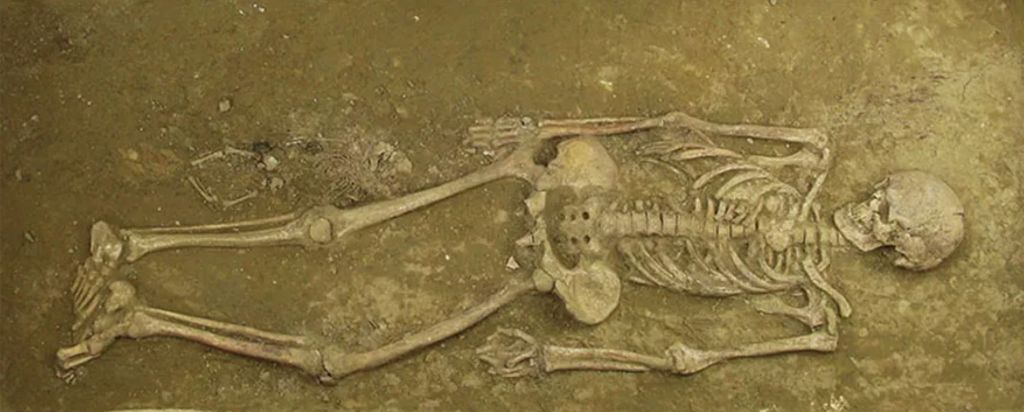

ROMANIA
SÂNPETRU BIOARCHAEOLOGY FIELD SCHOOL: UNEARTHING THE MEDIEVAL PAST OF TRANSYLVANIA, ROMANIA
Dates: July 7 to August 3, 2024 Click here for project syllabus with full details
FIELD SCHOOL DIRECTOR(S)
Dr. Annamaria Diana, Bioarchaeologist/Independent Researcher (annamaria.diana@outlook.com)
Dr. Daniela Marcu Istrate, Institute of Archaeology ‘V. Pârvan’, Bucharest (dmarcuistrate@gmail.com)
For a detailed 2024 program syllabus, click here
OVERVIEW
The field school takes place in the quaint village of Sânpetru, located a few km north of Braşov, in southeast Transylvania (historical region of Romania), and is part of the broader Braşov Bioarchaeology Project, established in 2014 after rescue excavations in the centre of Braşov exposed a large medieval cemetery and associated medieval and post-medieval structures. Our team has since explored the history and development of Braşov and environs through the analysis of archaeological and bioarchaeological evidence.
Located in the heart of the Carpathians and founded in the 12th century by Central European colonists (generally referred to as Saxons), invited as settlers by the Hungarian king Géza II, the city of Braşov (called Kronstadt/Corona in medieval times) was a crossroads during the Middle Ages for travelers, merchants and diplomats from central Europe and the Middle East, where communities from various ancestral backgrounds coexisted. Such a multi-cultural reality, still poorly understood, was the result of centuries of population movement across Transylvania. From pre-Roman times to the Middle Ages, the fertile Transylvanian lands were traversed and pillaged by nomadic tribes, colonised by European settlers, or disputed and conquered by more powerful entities. The Saxon cities of Transylvania (Braşov, Sibiu, Sighişoara, to name a few), are emblematic of the persistence of this historical heritage.
 The Sânpetru Bioarchaeology Field School combines training in both bioarchaeological analysis and archaeological fieldwork, and in 2024 aims to achieve two crucial research objectives:
The Sânpetru Bioarchaeology Field School combines training in both bioarchaeological analysis and archaeological fieldwork, and in 2024 aims to achieve two crucial research objectives:
1) The post-excavation processing (cleaning and drying) and organization (anatomical sorting and preparation for storage) of human skeletal remains from the Braşov medieval parish church cemetery, an extremely interesting site not only for its complex stratigraphy and abundance of finds, but also because of its uninterrupted use by the wealthy and upper echelons of Braşov society for over five centuries, between the 12th and the 18th century AD. This was rare for Transylvanian cemeteries, the use of which was discontinued after the Reformation. Students will be able to learn new skills, both practical and theoretical, by working with skeletal materials from single, multiple and commingled burials.
2) To continue exploring the history and origin of the fortified Saxon church of Sânpetru, a village known for this religious building and for its 14th century painted chapel. During the 2023 season, two trenches (S.18 and S.19) relative to the outer fortified walls were excavated. Students were able to expose and retrieve an articulated calf skeleton, evidence of wall collapse, and a very interesting arched structure, together with pottery sherds from diverse historical periods, and scattered animal and human bones.
The 2024 excavations in Sânpetru will also aim to:
● Further our knowledge of the structural remnants discovered in the 2023 season;
● Continue investigating the origins and development of the settlement, which was donated to the Order of the Cistercians in 1240 AD;
● Clarify the relationship between the 13th century fortified structures and the religious buildings with them associated.
Students will also be able to witness the ongoing process of conservation and restoration of the church and associated fortified enclosures and to participate in cultural heritage activities. This is a unique opportunity which will allow students to experience the importance of interdisciplinary projects and discover how the combined efforts of researchers from diverse fields of study can answer compelling research questions and bring back to life sites rich in culture and heritage.
ACADEMIC CREDIT UNITS & TRANSCRIPTS
Credit Units: Attending students will be awarded 6 semester credit units (equivalent to 9 quarter credit units) through our academic partner, Connecticut College. Connecticut College is a highly ranked liberal arts institution with a deep commitment to undergraduate education. Students will receive a letter grade for attending this field school (see assessment, below). This field school provides a minimum of 270 hours of experiential education. Students are encouraged to discuss the transferability of credit units with faculty and registrars at their home institution prior to attending this field school.

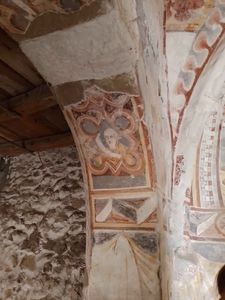
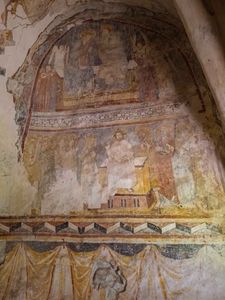
SPAIN
In Search of the Buried Viscounts: Bioarchaeology at a Medieval Franciscan Convent (Chelva, Spain)
Dates: Session 1: May 4-31, 2025 or Session 2: Sept. 7 to Oct. 5, 2025
Project website: https://www.fieldsciences.org/program/2025-spain-chelva-church-i/
Project website for Winter 2026 session (Jan. 4-31, 2026; application deadline Dec. 31, 2025): https://www.archaeological.org/fieldwork/2026-spain-chelva-forensic-i/
Project syllabus can be found at https://www.fieldsciences.org/wp-content/uploads/2024/10/Syllabus-Spain-Chelva-Church-2025-Session-I.pdf
PROGRAM DESCRIPTION
The Chelva Monastery was established 1390 CE, the oldest Franciscan mission in Spain. By the 16th century, the Church of San Francisco was built attached to the convent, in a Late Gothic style. According to written records, between 1551-1558 CE the Viscounts of Chelva – important leaders of the Iberian period – were buried under the alter of the church (Fig 1). This project is design to verify the validity of these textual records, excavate the remains of these important figures and study the life and death of elite, individuals from the nobility class of the period.
来
COURSE OBJECTIVES
The objective of this program is to enable students to better understand how archaeology is practiced in the field, to explore the diverse lifestyle of people in the past and to gain basic understanding of the evolution of cultural complexity. This program also trains students for potential careers in the Cultural Resource Management sector.
To achieve these objectives, this course has three primary goals: (1) to provide students a practical working knowledge of archaeological field methods, excavation, including excavation of human remains, laboratory analysis, artifact cataloging, and conservation; (2) to introduce students to the intellectual challenges presented by archaeological research, including research design, the interpretation of data, and the continual readjustment of hypotheses and field strategies with regard to information recovered in the field; and (3) to train students in documenting and filing paperwork in accordance with laws and regulations design to protect cultural resources.
The course will take place in the medieval Franciscan convent, located ½ mile outside the modern town of Chelva. Students will participate in the following research activities:
Excavations: Students will participate in guided excavations at the Church of San Francisco. Bio-anthropology: Students will conduct excavation and documentation of burials and human remains.
Recordation: Students will participate in filling out specific excavation forms, map finds, and record stratigraphy. Many of these forms are relevant to commercial archaeology and cultural resource management sector.
Cataloging: Students will participate in field sorting and cataloging of finds.
Laboratory: Scheduled lab tasks will include washing, sorting, drawing, and cataloging of finds.
DIRECTOR: Dr. Llorenç Alapont Martin, Prof. Physical and Forensic Anthropology, Universidad Europea Valencia, Spain (llor.alapont@gmail.com)
Mr. Juan José Ruiz Lopez, Fundación Antonia Calavel, Spain (juanjoruiz4@hotmail.com)
SPAIN
Forensic Archaeology of Mass Executions During the Spanish Civil War (Chelva, Spain)
Dates: June 1 to June 28, 2025
Project website: https://www.fieldsciences.org/program/2025-spain-chelva-civil-war-ii/
PROGRAM DESCRIPTION
The Spanish Civil War was fought from 1936 to 1939, between Republican and Nationalist forces. The war began in 1936, when General Francisco Franco initiate a coup d’état against the democratically elected Republican Spanish state. Franco wanted to establish a fascist state in Spain and was supported by the then contemporary fascist regimes of Germany and Italy. The Spanish Civil War is considered by many around the world as a struggle between dictatorship and democracy and was internationalised almost immediately. Volunteers from around the world joined combatants of both sides. By 1939, Franco’s forces won the war, and the regime began an intensive, long-term process of liquidation of its foes.
Castellón began to be directly affected by the Spanish Civil War at the end of March 1938. With the defeat of Republican forces at Teruel, General Aranda – the commander of the Nationalist army – advanced toward Castellón. The town fell to the Nationalist forces on June 14, 1938, and the regime began its ‘liquidation’ program immediately. This program is focused of studying human remains from the long liquidation process at Castellón.
The ‘liquidation’ of political opponents at Castellón took place in three different phases. From July to October 1938, irregular killings were carried out in the streets and exits of the town, on the roads or in local cemeteries. From November 1938 to February 1939, official files were created for detainees. No judicial process was followed, and immediate death sentences were signed by the military. The third phase was an institutional one. The regime created official War Councils, and a semi-judicial process was followed before death sentences were issued. That phase lasted until 1956. The vast majority of those executed in Castellón and its hinterland were killed during the third phase.
Recent excavations of a mass grave at the cemetery of Castellón, human remains of 51 individuals were exhumed. Due to legal protocols and chain-of-custody procedures followed by the Spanish authorities, the remains were transferred to Chelva, the Valencia regional hub for Civil War human remains.
This field school is focused on studying the remains to determine identity, cause of death and other forensic elements. We have two main goals. The first is to create proper documentation standing to contemporary legal standards so perpetrators can be prosecuted (a political decision) and historical truth established. Second, we hope to identify victims from mass graves and return to families so individuals may be intern with named, marked graves.
Each student will be responsible for the complete recording & study of at least one individual, and more if time permits. This program includes extensive travel to local Civil War sites, including Teruel and Valencia. Students will learn how to contextualize the analysis of human remains with historical events, how to engage with stakeholders and how to study victims of war atrocities and mass burials.
COURSE OBJECTIVES
Our program is designed to train students and professionals. Experience from this program may benefit individuals interested in forensic anthropology, forensic archaeology and bioarchaeology. While some experience working with human remains will be helpful, beginners are welcome. The first two days of the program will focus on training in ethics, international field and laboratory work protocols in forensic anthropology, human rights and their legal context in conflicts. Each student will be trained in the techniques of forensic anthropology methods. The two main objectives of this training are:
- To develop and extend skills in the identification and analysis of skeletal human remains.
- To provide the theoretical and practical knowledge to study and investigate real cases and produce scientific and technical reports. This field school is aimed to be practical and applied. The four weeks will be dedicated to analysing human remains in the lab. The laboratory work will be complemented with workshops and visits to museums and sites and lessons focused on field work, exhumation, and postexcavation work. Each student will be assigned the remains of a single individual (both inhumed and cremated), which they will have to document for the entire process. Students will have the guidance, assistance and help of staff members at all times. A seminar will be held each Friday afternoon, where we will discuss work completed during the week, methods, findings and questions. Saturdays and Wednesdays are dedicated to excursions to important archaeological and cultural sites in the area. Sundays are rest & recuperating days.
OSTEOLOGY AND HUMAN ANATOMY ❖ Identification of human skeletal remains ❖ Morphology and variation of the skull ❖ Human muscle-skeletal anatomy ❖ Identification of the immature skeleton, individual bones. ❖ Identification and study of cremated bones. Quantitative and analytical methods ❖ Osteometry and anthropometry Application of methods, measurements and instruments. Quantification and comparison. Use of standards
BI
FI
RECORDING AND GRAPHIC RECONSTRUCTION OF BONES AND SKELETONS ❖ Techniques and methods of graphic field recording 1: field drawing, topography, total station, 3D scanner, photography and drones. ❖ Techniques and methods of graphic field recording 2. Photography, photogrammetry and scanner. ❖ Techniques and methods of graphic recording in the laboratory: drawing, photography and scanning of human remains. ❖ Data processing in the laboratory: digitalisation. ❖ Reconstruction and recreation of burial and gesture. ❖ Physical and computerised facial reconstruction
FORENSIC ANALYSIS AND COMPLEMENTARY STUDIES ❖ The deontology of death and professional practice ❖ Judicial expertise. protocols, excavation and study of mass graves, civil war, conflicts. ❖ Quantitative methods in anthropology. Application of statistical and numerical methods and numerical methods in quantitative problems in biological anthropology, palaeoanthropology, osteo-archaeology. ❖ Chemical analysis of skeletal remains. Contribution of stable isotopes to osteo-archaeology. ❖ Molecular analysis and DNA ❖ Radiometric dating (carbon 14) ❖ Radiological study of anthropological remains (radiology, tomography). ❖ Microscopic analysis of skeletal remains ❖ Development of analytical methods in osteo-archaeology.
DIRECTOR: Dr. Llorenç Alapont Martin, Prof. Physical and Forensic Anthropology, Universidad Europea Valencia (llor.alapont@gmail.com)
Archaeology of Violence of the Spanish Civil War and medieval city research (Belchite, Spain)
Dates: July 15 to August 30, 2025
Project website: https://www.archaeological.org/fieldwork/archaeology-of-the-spanish-civil-war-and-medieval-city-in-belchite/
PROGRAM DESCRIPTION
The target of the project on 2025 in the old quarter will be: 1- Digging the medieval synagogue and document in a map all the civil war materials of the battle of 1937 in the medieval quarter. 2- Research on the origins of Belchite doing test in the medieval quarters.
DATES (Minimun stay 15 days). You can be the whole season or a month also.
First team 15- 30 July. Second team 1-15 August. Third Team: 16-30 August.
HOW TO GET THERE
Daily trains and buses depart for Zaragoza from Madrid and Barcelona. From Zaragoza, there is a bus service to Belchite, making ten trips a day, that leaves from the central bus station. A timetable will be supplied.
ACCOMODATION
Accommodation and dinners in a restaurant will be provided in the new village, just a 10-minute walk from the excavation site.
FEE: The fee for 15 days of fieldwork is €1000. This includes accommodation, dinners, work materials, and various lectures and cultural excursions.
BOOKING YOUR PLACE: Contact the director, Alfonso Fanjul. Alfonso Fanjul Peraza schoolofarchaeology@gmail.com
Oviedo, Asturias 33199, España
Phone: (+34) (code for Spain) 679079076
WORK SCHEDULE
On the first day there will be a guided tour of the ruins of the old city, as an introduction to the project, and on the same day talks will be given on the history of the area, the work schedule for the project and safety guidelines for the works of clearing. Team members will work five days a week, leaving a day free to visit the battlefield and a rest day. Work at the excavation will begin at 7am on weekdays in order to avoid high midday temperatures. In the afternoon, after the lunch break, there will be laboratory tasks and a series of seminars on different aspects of the Spanish Civil War. Between lunch and the laboratory work, team members will have access to the municipal swimming pool. Dinner will be in a local restaurant.
否
SPAIN
2024 Spain: Exhuming Human Remains from Modern Mass Burials: Forensic Archaeology from the Battle of Teruel, Spanish Civil War
Dates: June 2-29, 2024 Application Deadline: March 1, 2024
Program Syllabus: https://www.fieldsciences.org/wp-content/uploads/2023/11/Syllabus-Spain-Teruel-2024.pdf
OVERVIEW:
The Spanish Civil War (1936-1939) was a global political event and experimental grounds to test modern weaponry and war tactics. One of the most consequential battles of the war was the Battle of Teruel, fought between December 1937 and February 1938. The vicious battle took place during one of the worst winters in Spain and considered to be the ‘Stalingrad’ of the Spanish Civil War. More than 40,000 soldiers from both sides died there. At least 406 of these soldiers were buried in a large mass grave at the site of San Blas, a small cemetery on the outskirts of Teruel. The soldiers were buried side by side, regardless of the side they fought for, with their weapons, uniforms, boots, and personal objects. This mass burial is the focus of this program.
Initial investigations at San Blas were carried out in 2022 and the remains of 18 individuals were recovered. One individual wore a uniform with brass buttons with symbols of the U.S. Army and other American artifacts. This suggest that American members of the Abraham Lincoln Battalion were buried at San Blas, and that more U.S. citizens may be recovered there.
This program is design to train students in the process of human remain exhumation from mass graves. The goal is to identify and bring closure to families and decedents of these dead. In addition, this program train students how to plan, execute, record, document and identify individuals from mass burials. While our hope is that such skills will not be needed, reality is different, and professionals trained in excavation of mass burials are still needed across the world.
This program will extract an emotional toll on its participants. Families of the deceased will be present and there is still a deep political division in Spain about its civil war. This program requires resilience, perseverance, strong ethics and attention to details. Consider how challenging this program is before applying.
PLEASE READ BEFORE APPLYING
This program is focused on exhumation of human remains who perished during the 1937-38 Battle of Teruel, one of the most vicious of the Spanish Civil War. The program is designed to train students in the excavation and exhumation of mass burials in conflict zones and prepare participants with methodological and legal issues (chain of custody, documentation, etc) that are crucial elements of such work. This program takes place where family & community members are alive and have deep and intensive interest in the exhumation work.
This program is emotionally and physically demanding, requiring the utmost respect for the dead and the living. Students should be aware of the challenges and should attend only if they feel this type of experience is for them. This program DOES NOT offer onsite professional grief counseling.
DIRECTOR: Dr. Llorenç Alapont Martin, Prof. Physical and Forensic Anthropology, Universidad Europea Valencia (llor.alapont@gmail.com)

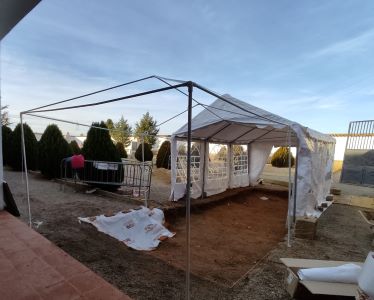
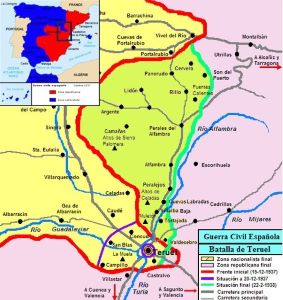


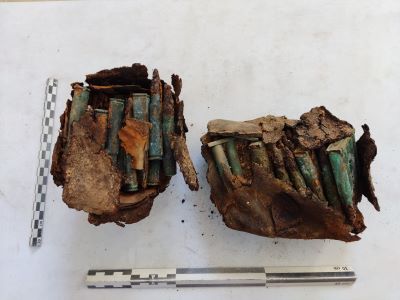
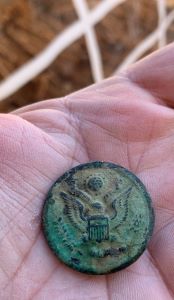
SPAIN
NEANDERTHALS & MODERN HUMAN ADAPTIVE STRATEGIES AT COVA GRAN DE SANTA LINYA, SPAIN
Dates: June 21 to July 19, 2025 Status: Open Orientation date: May 10, 2025
Project website: https://www.fieldsciences.org/program/2025-spain-cova-gran/
Project syllabus with detailed information: https://www.fieldsciences.org/wp-content/uploads/2024/10/Spain-Cova-Gran-Syllabus-2025.pdf
PROGRAM DESCRIPTION
Where did we, humans, come from and where are we, contemporary people, heading to? These important and intimately related questions have become increasingly relevant as technological [r]evolution, along with profound political, economic, and cultural changes impact our daily lives. Leading scholarship on the issue has become broadly read and widely popular – Yuval Noah Hararri’s Sapiens: A Brief History of Humankind, Gerald Dimond’s The World Until Yesterday and Graeber & Wengrow’s The Dawn of Everything, to name just a few.
This program is dealing with our beginning, with the emergence of modern humans as seen from Southern Europe. It also deals with relationships & interaction with our closest relatives – Homo neanderthalensis. While our work is highly focused and limited in space, the unique level of preservation and depth of occupation history at Cova Gran offers an exceptional opportunity to study our ancestors, their interactions with the environment, with other hominins and with each other.
By 50,000 years ago, groups of hominins arrived at the Cova Gran rock shelter, building hearths and leaving behind well preserved bone, lithics and other evidence of human activity. These occasional visits lasted for thousands of years – throughout the Middle/Upper Paleolithic (at Cova Gran, 50,000-40,000 years ago). A complex stratigraphy of built hearths allows us to carefully study the evolution of human relationships to their environment, to specialized activities and to changes in technology. During the 2024 season, one part of the team will excavate at Sector R, where the Paleolithic visitors left their material evidence.
Limited excavations during Covid yielded spectacular results in Sector V. Partial skeletal remains of Homo Sapiens – primarily long bones – were recovered at the site and dated to 15,000 years ago. This is a rare find, as we know very little about European human populations of the time (we know a lot more about the anatomy and lifestyle of Neanderthals from the region). As these populations were likely replaced by migrants from Anatolia and the Near East during the Neolithic “revolution” (ca,7,000 years ago in our region) we know very little about the indigenous H. sapiens who originally migrated from Africa to Europe around 50,000 years ago. For the 2024 season, another part of the team will excavate in this area – Sector V – trying to find specific bones with enough preserved DNA materials to study and understand the paleogenomic and paleoanthropological relationship of this individuals with other H. Sapiens populations spread and isolated in Eurasia at the same period.
To find the best path forward we must understand where we came from. We must understand the forces that shaped our biology and culture to become what we are today. The Cova Gran project is a narrow, but deep window into the past, allowing us to explore and reflect on such issues. Cova Gran unique preservation and extremely long cultural occupation provides for the extended documentation, study, and interpretation of human evolution at the regional level. It is a critical and significant data point for the global understanding of our human origin and for our ability to make informed decisions about our collective future.
Students MUST remember that while our research is informed by big questions, field work is highly detailed, careful and slow. Expect lively discussions of exciting issues, but DO NOT expect a definite answer. Archaeological knowledge works gradually, by building evidence upon evidence, so patience and perseverance are crucial for any quality research work.
COURSE OBJECTIVES
This program is an immersive, practical experience in archaeological fieldwork involving hands-on experiential learning: students will study how to conduct archaeological research. Archaeology involves physical work and exposure to the elements and thus requires a measure of acceptance that this will not be the typical university learning environment. You will get sweaty, tired and have to work in the outdoors. Students are required to come equipped with sufficient excitement and adequate understanding that the archaeological endeavor requires fieldwork experience.
The main goals for this program are:
- Provide students with practical working knowledge of archaeological field methods, including survey, excavation, laboratory analysis, artifact cataloging, and conservation.
- Introduce students to the intellectual challenges presented by archaeological research, including research design, the interpretation of data, and the continual readjustment of hypotheses and field strategies in response to information recovered in the field.
From a methodological perspective, fieldwork includes three main aspects:
Excavation: The goal of the excavation is the retrieval of artifacts, ecofacts and features within context. Participants will be trained in the specific excavation and analysis tasks as well as in the general objectives of the excavation and its research design.
Lab Work: Lab work is a key part of our archaeological strategy and includes inventory, classification and initial study of the artifacts, bones and archaeological structures found at the site. Project staff will train all participants in the study of the material retrieved during the excavation. Each day, we will discuss the activities to be performed and the results that are being obtained to plan for the work ahead and to fully involve participants in the project. Lectures: Activities will be complemented with lectures.
Lectures will be 45-60 minutes each and presented by staff. Lecture titles and themes are listed below. The schedule may be subject to change, depending on the weather and research activities.
DIRECTORS: Dr. Javier Sánchez Martínez: Research Associate, Universitat Autònoma de Barcelona (javier.sanchez.martinez@uab.cat)
Dr. Rafael Mora Torcal: Professor, Universitat Autonoma Barcelona (Rafael.mora@uab.cat)
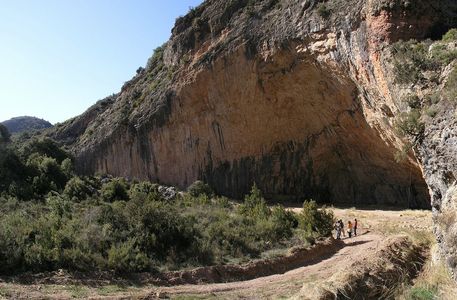
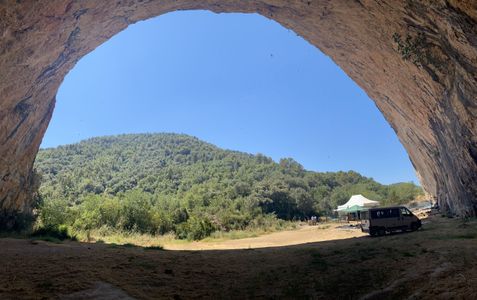
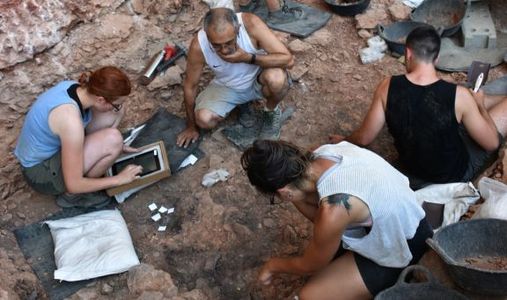

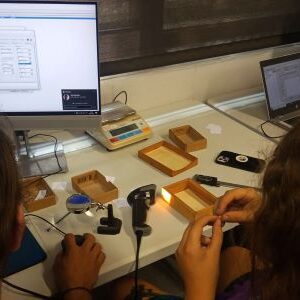

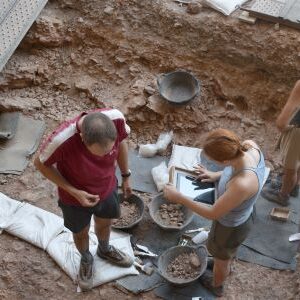
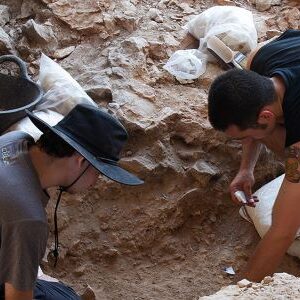
SPAIN
ADITU BIOARCHAEOLOGY FIELD SCHOOL 2023 (Roncesvalles, northern Spain)
Dates: July 3 to July 24, 2025 (Session 1); July 26 to August 16, 2025 (Session 2)
Application deadline: April 30, 2025
Project website: https://aditufieldschool.weebly.com/
Join us in the exploration of one of the most intriguing and mysterious sites in Western Europe. In 2025 we will be returning to the Silo of Charlomagne, where legend has the final resting place of the Carolingian soldiers who died at the Battle of Roncevaux Pass in 778 AD, and immortalised in the French epic The Song of Roland.
The 2025 Aditu Archaeological Field School is a research project investigating the origins of the medieval ossuary located at Roncesvalles (Northern Navarre, Spain) just a few miles from the French border. The purpose of the project is to investigate what is rumoured to be the burial site of the rearguard of Charlemagne’s army, ambushed in the Battle of Roncesvalles and immortalised in the medieval French work “La Chanson de Roland.” In addition to its historical significance, the location has long been an important rest stop for pilgrims hiking the Camino de Santiago from France, as it represents the traditional first stop upon crossing the Pyrenees mountains and entering the Iberian peninsula.
The ossuary is the oldest structure that forms part of the religious complex of Roncesvalles. Historical sources, as well as previous interventions at the site, have attested to the long chronology of burials present within the ossuary, and this project anticipates being the most extensive excavation undertaken to date at the site.
In 2025 our aim is to better understand the history and importance of the structure through continuing to excavate the upper layers of the complex. The focus of the field school will be on the excavation and the analysis of complete skeletons and commingled remains, and will be accompanied by lectures on human osteology, calculation of MNI, archaeological practice, Basque and medieval archaeology and relevant topics related to field methodology and finds processing. The field school represents a rare opportunity to excavate a unique site of huge historical significance and gain insight into different types of field and laboratory methodologies within commingled contexts.
The team responsible for the excavation, Aditu Arkeologia, has extensive experience in field schools and there was already a field season at Roncesvalles between 2019 and 2024. Results from the anthropological analysis of remains uncovered at the site will form part of a wider study of the population of Navarre in the Middle Ages, and samples from articulated burials are expected to provide data to be used in stable isotope analysis.
Where is Roncesvalles? Roncesvalles (Orreaga in the local Basque language) is a small municipality in Navarre, one of the seven Basque territories nested in the Western Pyrenees. The site is located at around 1000 meters above sea level (some 3200 feet). Throughout the whole year but more specially during the Summer, Roncesvalles is a favourite destination both for tourists and pilgrims, as the sanctuary is a pivotal place along the old European pilgrimage route to Saint James of Compostela, known as “el Camino.”
Will you join us in 2025?
The field school is aimed at students or graduates of archaeology and associated disciplines, although if places are available, it will be open to anyone that has an interest in developing their knowledge and skills in archaeological field methodology. At least a basic knowledge of human osteology is preferred, as archaeological layers consist of primarily articulated skeletons and disarticulated remains, and the ability to recognise fragmentary skeletal elements will be an asset. Students will spend 7-8 hours per day engaged in field work or in the processing of materials recovered from the field. Throughout the course, students will become proficient in excavation procedures, field drawing, documentation, and find processing and analysis.
Please note that a certain level of physical fitness is necessary to get in and out of the ossuary, as well as to work for extended periods kneeling. The ossuary is a large space, measuring about 9m x 9m (30 x 30 feet), but has no windows and only one opening for access. As such, this may be a difficult site for those suffering from severe claustrophobia.
Accommodation will be provided locally, including self catering breakfast and lunch (ingredients provided), with dinner being the main meal daily. All necessary facilities are provided (electricity, hot showers, dormitory style accommodation). Participants will be given 2 rest days in the middle of each session.
All projects and archaeological activities at Aditu Arkeologia in Roncesvalles follow the rules set out by the Government of Navarre Department of Archaeology and the Codes of Practice provided by the European Association of Archaeologists.
Please, visit their website to get familiar with what to expect and the guidelines and regulations we follow when designing our research projects and in our International Field School.
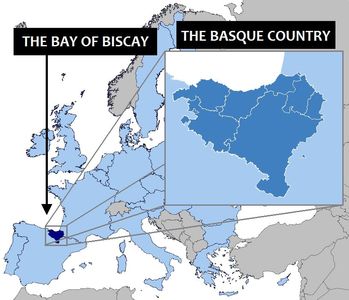

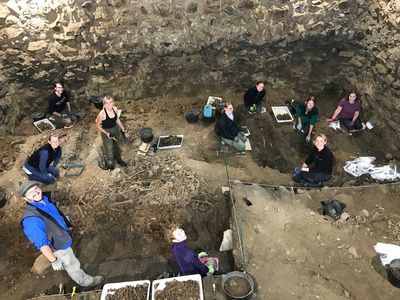

TURKEY
THE PINARBAȘI EXCAVATION, TURKEY: INVESTIGATING THE BEGINNINGS OF SEDENTISM IN THE NEAR EAST
Date: June 23 to July 19, 2025 Deadline: Dec. 1, 2024, Payment deadline: April 15, 2025
Project website: https://ifrglobal.org/program/turkey-pinarbasi/
Full project 2024 syllabus can be found here
Introduction:
迪
OVERVIEW
你
Th
COURSE OBJECTIVES
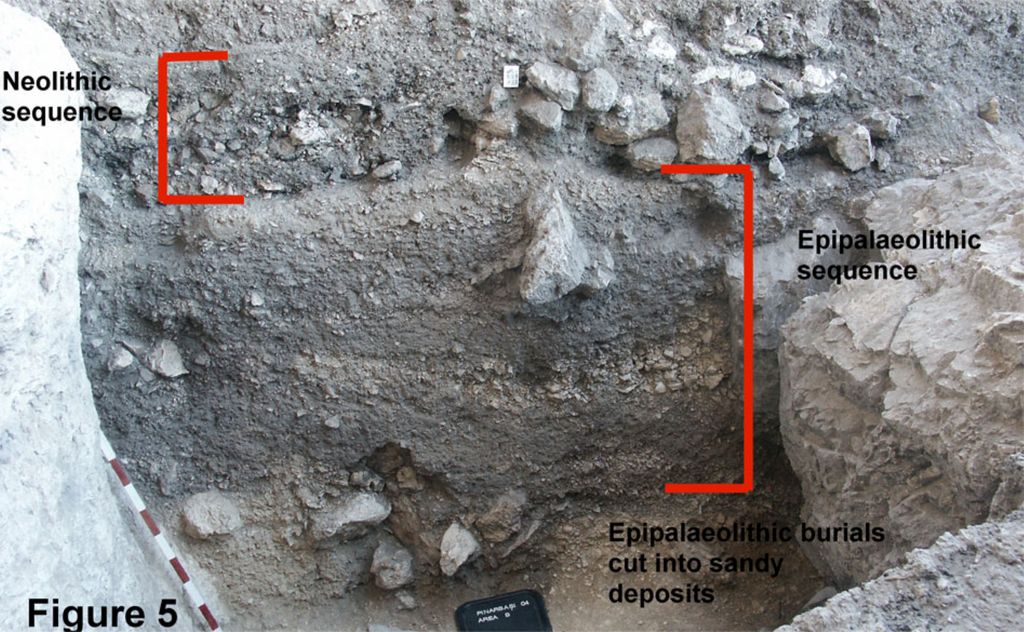 The objective of the course is to enable students to better understand how archaeology is practiced in the field. To achieve this objective, this course has three primary goals: (1) to provide students a practical working knowledge of archaeological field methods, including survey, excavation, laboratory analysis, artifact cataloging, and conservation; (2) to introduce students to the intellectual challenges presented by archaeological research, including research design, the interpretation of data, and the continual readjustment of hypotheses and field strategies with regard to information recovered in the field; (3) to introduce students to the Neolithic and later archaeology of Anatolia. The primary directive of this program is to enable students to better understand how archaeology is practiced in the field. Students will also learn how archaeologists study the the beginnings of sedentism in an area where it first began.
The objective of the course is to enable students to better understand how archaeology is practiced in the field. To achieve this objective, this course has three primary goals: (1) to provide students a practical working knowledge of archaeological field methods, including survey, excavation, laboratory analysis, artifact cataloging, and conservation; (2) to introduce students to the intellectual challenges presented by archaeological research, including research design, the interpretation of data, and the continual readjustment of hypotheses and field strategies with regard to information recovered in the field; (3) to introduce students to the Neolithic and later archaeology of Anatolia. The primary directive of this program is to enable students to better understand how archaeology is practiced in the field. Students will also learn how archaeologists study the the beginnings of sedentism in an area where it first began.
FIELD SCHOOL DIRECTOR: Prof. Douglas Baird, Department of Archaeology, University of Liverpool, UK (dbaird@liverpool.ac.uk)
This field school is one of many operated in collaboration with the Institute for Field Research (IFR)
TURKEY
HACIMUSALAR SETTLEMENT,ELMALI PLAIN (SW TURKEY)
-
Course Dates: Session I: June 11- July 11, 2023, Session II: July 12- August 12, 2023
Overview
In the Near East, there were many rapid past climatic changes, which brought significant socio-economic and political transformations. Past human societies dealt with these changes while causing anthropogenic changes in the same environment. The research on the Elmalı Plain will focus on reconstructing the past environmental conditions in the region along with possible rapid climate change events. Then, we will explore when and how human groups that inhabited Hacımusalar Mound might have adapted to such changes. Adaptive behaviors may include changes in land use patterns, resource extraction, social organization, and other socio-economic transformations. When these patterns are reconstructed at high spatio-temporal resolution across the Plain, simulating the socio-ecological dynamics will be possible.
Hacımusalar is a multi-period archaeological settlement in the Elmalı Plain of SW Turkey. The region still follows traditional agro-pastoral lifeway yet experiencing all the problems related to rapid climate change and anthropogenic degradation of its environment. Previous excavations at the Mound revealed major architectural remains such as fortification walls, houses and churches. The new phase of field work focuses on the long-term evolution of socio-ecological dynamics on the Plain. Using the long and complex archaeological record obtained from the Mound, researchers will dedicate the next decade to understand the time-transgressive patterns in human-environment interactions.
Field methods (geophysics, geology, paleobotany, remote sensing, etc.) that complement archaeological research make EFSG a unique setting to learn about the past human-environment interactions through active participation while learning about the current climate crisis and how it impacts communities with traditional lifeways.
Instructors
The directors welcome emails and inquiries about the research elements of this project. More general information (tuition, health insurance, and payment schedule) can be found under the ‘Students’ tab above. Any further questions may be addressed to IFR staff. Additional details about research, course schedule, travel, accommodation, and safety can be found on the syllabus. Contacting the directors or the IFR office is encouraged and appreciated. It may help you determine if this field school is a good fit for you.
TURKEY
THE BONCUKLU PROJECT, TURKEY: INVESTIGATING THE SPREAD OF FARMING IN THE NEAR EAST
Date: July 22 to August 20, 2022 Enrollment Status: Open, Payment deadline: April 15, 2022
Full program details can be found here
OVERVIEW
Th
For the project website, go here.
FIELD SCHOOL DIRECTORS:
Prof. Douglas Baird, Dept. of Archaeology, University of Liverpool, UK (dbaird@liverpool.ac.uk) Prof. Andrew Fairbairn, School of Social Sciences, University of Queensland (a.fairbairn@uq.edu.au)
This field school is one of many operated in collaboration with the Institute for Field Research (IFR)






TURKS AND CAICOS
Maritime Archaeology on Salt Cay: The island that time forgot
Dates: July 14-19, 2025 (currently full; waitlist)
Project website: https://www.theshipwrecksurvey.com/join/join-us-salt-cay/
Each year, The Shipwreck Survey organizes multiple underwater archaeological field schools and expeditions in exotic locations around the world. Field schools are held at locations where large-scale investigations of underwater archaeological sites are carried out. During these programs, participants are fully immersed in the archaeological process from start to finish, during which they learn a wide variety of skills. Field schools are a mix of presentations, workshops, underwater research, data processing, artifact conservation, and public outreach. Participants will learn all the basic skills and methods of underwater archaeological investigation.
About the project and the island
With approximately 60 inhabitants on 2.6 square miles, Salt Cay is the least populated of the main inhabited islands in the Turks & Caicos Islands. Tourists often bypass the island in favor of Grand Turk or Providenciales. In the colonial period, however, the island played an important role in Atlantic World trade networks.
是
Salt Cay and its surrounding waters are largely unexplored from an archaeological point of view. The goal of this expedition is to make an archaeological map of the island, and to learn more about the island’s past by studying specific sites in depth.
During a reconnaissance trip in 2019, we discovered a number of underwater and terrestrial sites that we started to document in 2023. These include a wooden shipwreck in shallow water and the HMS Endymion, a British 44-gun warship that sank in 1790 south of Salt Cay. We continued our explorations in 2024 by documenting two shipwrecks and discovered three more! During the 2025 expedition, we will document the newly found sites and explore Salt Cay and nearby uninhabited islands in order to find new sites.
Salt Cay and its surrounding waters are largely unexplored from an archaeological point of view. The goal of this expedition is to make an archaeological map of the island, and to learn more about the island’s past by studying specific sites in depth.
During a reconnaissance trip in 2019, we discovered a number of underwater and terrestrial sites that we started to document in 2023. These include a wooden shipwreck in shallow water and the HMS Endymion, a British 44-gun warship that sank in 1790 south of Salt Cay. We continued our explorations in 2024 by documenting two shipwrecks and discovered three more! During the 2025 expedition, we will document the newly found sites and explore Salt Cay and nearby uninhabited islands in order to find new sites.
The expedition
The expedition will comprise a 16-day program packed with adventure and exploration, for a total of approximately 100 hours of underwater and terrestrial fieldwork, lab work, training, workshops, and lectures.
This expedition is not for everyone, and we want to be honest about what you’ll be getting into. Salt Cay is a truly off the beaten path destination. Despite it being relatively close to the United States, it feels like the end of the earth. There are no shops or grocery stores on the island, so we will bring food with us from neighboring Grand Turk. Choices at the few restaurants are limited, so you can’t be a picky eater. It will be hot, humid, and sometimes uncomfortable. You need to be in good physical shape and be able to deal with the Caribbean summer heat. We will have internet connection, but it won’t be very fast and it might not be very reliable. We don’t have a fixed schedule as several things are dependent on weather and other factors out of our control. This is the nature of an expedition.
Having said all of that, the island and its surrounding waters are absolutely stunning. There are beautiful white sandy beaches that you will have all to yourself. The water is clear and warm, and filled with life. The 60 or so people who live there are very friendly and will make you feel at home. Ending the day with a cold beer, watching the sun set over the deep blue Caribbean Sea is hard to beat. You’ll be part of a unique pioneering project, the first of its kind in the Turks Islands. We will survey uninhabited islets nearby, document submerged sites, and go to places where no researcher has ever been. It will be an experience of a lifetime.
This program is open to both divers and non-divers, as a lot of sites are in very shallow water and there is a terrestrial component to the expedition as well. To join as a snorkeler, you should be a good swimmer and be comfortable in the water. Because of the relatively easy dive conditions, for divers we only require a PADI Open Water Diver certification or equivalent certification from another training agency. Since we will be doing research underwater, there is a bit of task loading, which means you need to be comfortable in the water. The date of your last dive should be no more than a year before the start of the expedition.
STAFF:
Ruud Stelten
All our programs are led by experienced maritime archaeologist Ruud Stelten. Born in the Netherlands, Ruud earned BA, MA, and Ph.D. degrees in archaeology at the Faculty of Archaeology at Leiden University.
After working in Dutch commercial archaeology for over a year, Ruud became the island archaeologist on St. Eustatius in the Dutch Caribbean in 2011. Since then, he has directed numerous underwater and terrestrial archaeological projects and field schools, teaching hundreds of students on various islands such as Mauritius, Martinique, the Dominican Republic Grenada, St. Eustatius, Salt Cay, and Bonaire. In 2016, he founded Terramar Museum, a new archaeological museum on Bonaire. A year later, he founded The Shipwreck Survey in order to focus fully on underwater archaeological research and exploration. In addition to his work at The Shipwreck Survey, Ruud is also an associate lecturer at Flinders University in Australia. Ruud has been diving for over two decades. He is a PADI Open Water Scuba Instructor and Specialty Instructor with experience diving all over the world. Besides archaeology, his big passion is underwater photography.
Alex Hinton
Alex Hinton is an American archaeologist who holds a Masters degree in maritime archaeology from Flinders University. For the past five years, she has worked on archaeological projects across the Caribbean and United States.
Alex was Director of the St. Eustatius Center for Archaeological Research from 2021 to 2022. Her research in the Caribbean has focused primarily on maritime archaeological projects, but she has extensive experience in terrestrial archaeology as well. Her specialties are underwater site formation processes and the archaeology of colonial-period warships. Besides being a vital part of The Shipwreck Survey’s field team, Alex brings a wealth of knowledge and experience to the lab, where she leads the artifact conservation and documentation processes. She is currently a Ph.D. candidate at Flinders University, focusing on Dutch East India Company shipwreck collections.
UNITED KINGDOM
Rampart Scotland: Excavations at King’s Park Fort, Stirling (Scotland), and Battle Hill, Huntly (Scotland)
Project dates: King’s Park Fort, Stirling: Aug. 5-15, 2025; Battle Hill, Huntly: July 15-25, 2025
Project website: http://www.rampartscotland.co.uk/index.php/join-the-team/
King’s Park Fort, Stirling (5th – 15th August 2025)
The King’s Park, Stirling, is the oldest and best preserved Royal Park in Scotland and surrounds Stirling Castle, the ancient capital of Scotland. In December 2017, path works within the castle identified a previously unrecorded late prehistoric defended fort, built on the highest point in the park and right next to a golf course!
Stirling sits at the lowest crossing point of the River Forth and was the only way for armies to invade or resist invasion and of course played a key role in both the Battle of Stirling Bridge and the Battle of Bannockburn. The same factors exploited by Bruce and Wallace also influenced the Roman occupation of Scotland and the King’s Park fort most likely dates to this period when a series of enclosures where built at key locations to exploit Roman trade with the northern Scotland. The 2023 season also found a previously unknown Bronze Age burial cairn which will also be dug in 2025. Join us as we continue to uncover the King’s Park Fort!
The King’s Park fort is part of a long term, relaxed and open series of projects to explore the Late Prehistoric settlement patterns of the Forth Valley and will run from the 5th to 15th August 2025. The project will be run by Dr Murray Cook and you can read more about Murray’s wider research at SCARF and at Stirling Archaeology on Facebook.
For more information, or to book your place contact the Project Director Dr Murray Cook at: info@rampartscotland.co.uk
The King’ Park Fort is the latest season in an ongoing program of research into Forth Valley’s Late Prehistoric settlement pattern and how the native peoples interacted with the Roman conquest.
The training is relaxed and easy going and you can learn as much or as little as you want to. You will have the opportunity to excavate archaeological remains that have never been examined before.
- Project Dates: 5th to 15th August 2025
- Location: City of Stirling, Scotland.
- Contribution: £550 UK pounds for the length of the season or £55 per day, no minimum attendance. The price only includes training and participation in the project, you must provide your own food and accommodation (N.B. Deposit of £200 is non-refundable).
- Project type: Open to students and volunteers (minimum age accepted: 17 years old) – Places are limited so early booking is recommended.
- Accommodation: No accommodation provided but there are numerous hostels, B&Bs and hotels in Stirling and the site is a 10 minute walk from the city centre..
- Experience required: None, as professional archaeologists will always be on-site to provide guidance.
- Other activities: We hope to organise two trips to see contemporary sites in the evening .
- What to wear: Scottish weather can change at any time, sometimes with four seasons in one day. It is recommended that you come prepared with a range of clothing including clothes for sunny weather, cold weather and hard rain; light-weight clothing, a waterproof coat and stout boots, sun block and a hat are suggested.
Battle Hill – Prehistoric Landscape Project (15th to 25th July 2025)
Battle Hill, Huntly – named after a daring raid in 1307 during the Scottish Wars of Independence – contains a variety of previously unmapped prehistoric sites including Mesolithic, Neolithic and Bronze Age lithic scatters, a possible Iron Age hillfort, and a 3000 year old upstanding hut circle as well as a potential Neolithic/Bronze Age cairn measuring 20-30m in diameter and up to 3m high! Hillforts are elite Iron Age settlements often surrounded by banks, ditches and palisades, found in prominent locations such as Battle Hill.
Battle Hill preserves a prehistoric landscape built on higher, more marginal ground at a time when the climate was warmer meaning it was possible to live there. As the climate worsened the structures were abandoned. Avoided by subsequent farmers who built and farmed around them, the remains eventually became preserved within the forest itself.
Join us as we continue the first excavation of Battle Hill and uncover its rich secrets!
The Battle Hill Prehistoric Landscape Project is the 22nd season of a long-term, relaxed and open series of research and training excavations into Prehistoric Aberdeenshire and will run from the 15th to 25th July 2025. The project has to date produced over 12 publications and Dr Murray Cook’s PhD. You can read more about the archaeological landscape and some of the work we’ve done here.
The 2019 season identified a new possible cairn under a 1000 year old bank and revealed more features of the 2500 year old hillfort.
You can view the 2017 report here to find out more about the site and what we’ve been up to.
For more information, or to book your place contact the Project Director Murray Cook at: info@rampartscotland.co.uk
The Battle Hill Prehistoric Landscape Project is the latest season of research into Aberdeenshire’s prehistoric settlement patterns. Previous seasons have explored Roman marching Camps, vitrified forts, Pictish settlement and Mesolithic, Neolithic and Bronze Age lithic sites and cairns.
The training is relaxed and easy going and you can learn as much or as little as you want to. You will have the opportunity to excavate archaeological remains that have never been examined before.
- Project Dates: 15th to 25th July 2025
- Location: Huntly, Aberdeenshire, north-east Scotland.
- Contribution: £550 UK pounds or £55 a day. The price excludes accommodation and, food. Transport to and from the site can be organised for those staying locally. (N.B. Deposit of £200 is non-refundable). A limited number of places are available in the dig accommodation at cost…please ask for details.
- Project type: Open to students and volunteers (minimum age accepted: 17 years old) – Places are limited so early booking is recommended.
- Experience required: None, as professional archaeologists will always be on-site to provide guidance.
- Other activities: Trips to local archaeological/historical sites.
- What to wear: Scottish weather can change at any time, sometimes with four seasons in one day. It is recommended that you come prepared with a range of clothing including clothes for sunny weather, cold weather and hard rain; light-weight clothing, a waterproof coat and stout boots, sun block and a hat are suggested.
The Battle Hill Prehistoric Landscape Project is co-directed by Dr Murray Cook and run in partnership with Aberdeenshire Council.
UNITED KINGDOM
Bainbridge Archaeological Training Field School 2025 (Bainbridge, Wensleydale, North Yorkshire, UK)
Dates: Sept. 8-19, 2025
Project website: https://mercian-as.co.uk/bainbridgetrainingdig.html
Join Mercian Archaeological Services CIC in the beautiful Yorkshire Dales for this week-long training excavation, which focuses on the teaching of archaeological excavation methods.
As well as offering the very best in archaeological training and support, this training excavation is tailored towards enabling attendees to fulfil requirements of the Archaeological Skills Passport.
The beautiful village of Bainbridge was formerly the administrative centre of the medieval Forest of Wensleydale, and the magnificent Bolton Castle near Leyburn dominates the valley to the east. A Roman fort looms large over the village of Bainbridge on the eastern side.
The site of the excavation is overlooked by a Late Bronze Age to Early Iron Age Slight Univallate Hillfort. This fort occupies the high ground at the top of a steep slope on the southern side of the site.
We will be concentrating our excavations on the possible medieval manorial complex to the north of this fort, which has been identified from earthworks and recently discovered pottery (see below).
The area is famous not only for its beautiful landscape, but also its world famous cheese, and as the backdrop to the television series ‘All Creatures Great and Small’.
Archaeological Training Excavation:
As stated above this course focuses on excavation, it is suitable for all levels from beginner to experienced digger.
For those wishing to develop their skills, for students and post-graduates seeking to fulfil the practical experience requirements of their courses… for those wishing to pursue a career in archaeology, or improve their knowledge to give them the edge at work… for those looking to acquire cross-transferable skills… for volunteer diggers wishing to raise their game, impress their friends, and increase their enjoyment of archaeology and heritage through a greater skill set and knowledge base…. through to people simply wishing to learn for the love of learning…
Everyone is welcome… no previous knowledge or experience is required…
The beautiful village of Bainbridge was formerly the administrative centre of the medieval Forest of Wensleydale, and the magnificent Bolton Castle near Leyburn dominates the valley to the east. A Roman fort looms large over the village of Bainbridge on the eastern side.
The site of the excavation is overlooked by a Late Bronze Age to Early Iron Age Slight Univallate Hillfort. This fort occupies the high ground at the top of a steep slope on the southern side of the site.
We will be concentrating our excavations on the possible medieval manorial complex to the north of this fort, which has been identified from earthworks and recently discovered pottery (see below).
The area is famous not only for its beautiful landscape, but also its world famous cheese, and as the backdrop to the television series ‘All Creatures Great and Small’.
About the site
A great starting point for information on the area around Bainbridge is the Yorkshire Dales National Park Authority Archaeology webpage:
http://www.yorkshiredales.org.uk/living-and-working/historic-buildings/archaeology
A further resource relating to Bainbridge and the wider landscape is the ”Out of Oblivion – A Landscape through time” website.
This site is based on the Historic Environment Record (HER) maintained by the Yorkshire Dales National Park Authority.
The aim is to “increase your enjoyment of the Yorkshire Dales and to help you understand more about the unique cultural landscape of the area created through the interactions of people and nature over thousands of years”.
http://www.outofoblivion.org.uk
Historical and Archaeological background:
The name Bainbridge comes from its location at the place where the “Cam High Road”, a Roman Road crossed the river Bain. To learn more about the Cam High Road see the webpage http://www.outofoblivion.org.uk/record.asp?id=424.
A Roman fort overlooked this crossing and a settlement grew around the fort named ‘Virosidum’.
The modern village is overlooked by the remains of this fort – ‘Bainbridge Roman fort and annexe’, which is located on the eastern edge of Bainbridge.
More information about the Roman Fort and settlement can be found on the following pages:
List Entry Number: 1017920 https://historicengland.org.uk/listing/the-list/list-entry/1017920
Historical Environment Record No: MYD4272 http://www.outofoblivion.org.uk/record.asp?id=116
Virosidvm, Roman Fort & Minor Settlement: http://roman-britain.co.uk/places/virosidum.htm
The village of Bainbridge grew in medieval times in the shadow of this fort and on the crossing of the Bain. Bainbridge was formerly the administrative centre of the medieval Forest of Wensleydale. The site of the excavation lies in fields to the south of the village core. The site contains a large number of earthworks. These include a linear holloway identified as the “Cam High Road”, a Roman Road which runs to the south of Bainbridge, and a Slight univallate hillfort dating from the late Bronze Age to Iron Age (see below).
Many other earthworks are identified as being associated with the late medieval Manorial complex for Bainbridge which is believed to have occupied the site.
Pottery discovered on mole-hills during recent topographic survey by Mercian, has suggested occupation on the site throughout the medieval period. The excavation will be testing theories regarding the medieval occupation of the site.
Due to the very rare status of Slight Univallate Hillforts, and particularly one located so far north, the Bainbridge site is protected as a Scheduled Monument.
https://historicengland.org.uk/listing/the-list/list-entry/1009323
UNITED KINGDOM
Isotope Analysis of Archaeological Materials (Cardiff, Wales, UK)
Dates: July 28 to August 8, 2025
Project website: https://www.fieldsciences.org/program/2025-uk-cardiff/
A project video can be seen at https://www.youtube.com/watch?v=9UiGc9ffH2E
Course syllabus can be seen at https://www.fieldsciences.org/wp-content/uploads/2024/10/Syllabus-UK-Cardiff-2025.pdf
PROGRAM DESCRIPTION Isotope analysis of ancient materials has become a key component of the archaeologist’s toolkit. Strontium and sulfur isotopes help document ancient mobility patterns. Carbon and nitrogen isotopes provide insights into animal and human diets. Oxygen isotopes help reconstruct environmental change. The list of relevant isotopes is long and all provide important archaeological data about life and choices humans made in the past. Understanding how isotope analysis works, therefore, is an essential skill for archaeologists, whether as archaeological scientists pursuing isotope analysis for their own research or as critical consumers of their colleagues’ conclusions.
This program provides a hands-on introduction to the basics of archaeological isotope analysis. Students will work with the semi-commercial unit Cardiff University BioArchaeology (C.U.BA), learning the theoretical foundations of isotope analysis and gaining practical experience with sample selection, physical and chemical sample preparation, sample analysis and laboratory safety. Students will work with materials from a variety of sites and time periods. Students should expect to analyze materials coming from animal and human remains found in archaeological contexts.
COURSE OBJECTIVES
The main objective of this program is to introduce students to the theory and practice of archaeological isotope analysis.
来
DIRECTORS:
Dr. Emily Holt – Archaeological Science Project Officer, Cardiff University BioArchaeology Lab, UK (holte@cardiff.ac.uk)
Dr. Richard Madgwick – Professor of Archaeological Science, School of History at Cardiff University, UK (madgwickrd3@cardiff.ac.uk)
UNITED KINGDOM
The Cerne Abbey Research Project, southwest England
Dates: In 2025 we will be running four 5 day sessions: July 12-16, July 18-22, July 24-28, and July 30-August 3
Program website: https://www.hugh-willmott.co.uk/cerne
Program videos: https://youtu.be/ctpRkJvZUvo and https://youtu.be/uo5n1Tkp1mY
DIRECTOR:Dr. Hugh Willmott, Senior Lecturer, European Historical Archaeology, University of Sheffield (h.willmott@sheffield.ac.uk)
PROGRAM DESCRIPTION
Founded in AD987 by Æthelmaer the Stout on the site of an earlier Christian community, Cerne Abbey grew to become one of the most important monasteries in the South West of England. Shortly after its closure during the Dissolution in 1539 the site was comprehensively demolished save for a gatehouse, and the precise location of its buildings lost until archaeological work started in 2022.
The abbey sits at the feet of the famous chalk-cut figure of a club-wielding giant that dominates the village of Cerne Abbas. Recent dating of the figure by the National Trust has shown that the giant was an Anglo-Saxon creation, and it seems directly connected to the earliest monks residing there. Ground Penetrating Radar (GPR) survey undertaken by the University of Sheffield last year provided the first ever evidence for the medieval abbey, and potentially its Anglo-Saxon predecessor beneath. Not only did it reveal an amazingly clear plan of the cloistral ranges, the survey showed that the buildings remained surprisingly intact with walls up to four feet tall in places.
Excavations in 2023 started to investigate these results, with a trenches located over the southwest corner of the cloister, which includes part of the west range and the north aisle of the monastic church. Although heavily robbed, our work revealed evidence for decorative tiled floors and even an intact burial in the cloister walk way. It seems that the cloister was extensively rebuilt in the 13th century and elaborately decorated with Purbeck marble detailing. We found a number of fragments of highly decorative carved stone that still retained evidence of original paintwork in red, white and orange) as well as surface gilding. These almost certainly came from a very important structure within the abbey church, possibly a tomb or even a shrine.
In 2024 we focused on locating the west end of the monastic church. Although this area was heavily disturbed by post-medieval robbing, we found sections of intact flooring and evidence for earlier phases of construction that were destroyed in a major 13th-century remodelling. A second trench was located over a building and open area to the north of the cloister. This appears to have originally been built as a high-status medieval hall, possibly an earlier abbot’s lodging, which by the 15th century was being reused as a glazier’s workshop.
We are now accepting applications for 2025
https://www.instagram.com/cerne_abbey/
https://bsky.app/profile/hugh-willmott.bsky.social

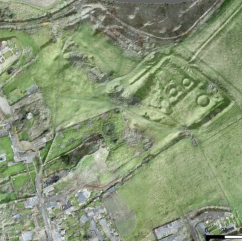
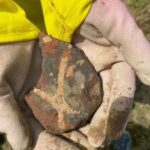
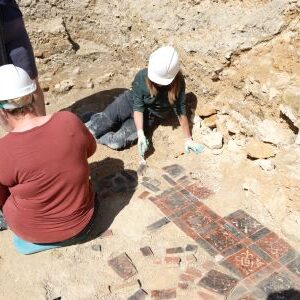
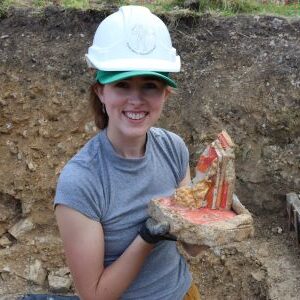
UNITED KINGDOM
STRATA FLORIDA ARCHAEOLOGY FIELD SCHOOL (Wales, U.K.)
Date: June 16 to July 14, 2025
Project website:https://www.strataflorida.org.uk/archaeology-field-school.html
The full Summer 2025 project brochure is coming soon; the 2024 brochure can be found here
Introduction
Excavations have been running at Strata Florida for 20 years, and the Trust now runs a public dig open to all.
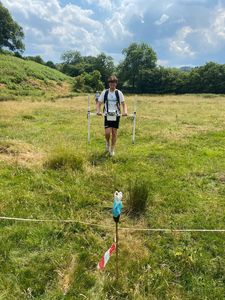 We offer a fully accessible training programme, including a wide variety of archaeological excavation and survey techniques, from understanding how to correctly use a trowel to the collection of geophysical data for archaeological mapping. We offer a mixture of residential courses and day courses, and we welcome people of all ages, those with no prior archaeological experience as well as those wanting to build upon previous skills.
We offer a fully accessible training programme, including a wide variety of archaeological excavation and survey techniques, from understanding how to correctly use a trowel to the collection of geophysical data for archaeological mapping. We offer a mixture of residential courses and day courses, and we welcome people of all ages, those with no prior archaeological experience as well as those wanting to build upon previous skills.
Ours aims to be the most inclusive archaeology school in the UK. We work with wellbeing and mental health support partners to deliver onsite support to participants. Our mission is to share Strata Florida’s unique history, archaeology, heritage and links to Welsh culture with as diverse an audience as possible, including members of the public, students, volunteers and others.
Volunteers are welcome to join the excavation team in summer 2025, although places are very limited.
Four 5-day sessions are being offered and each session costs £350 (approximately $440 USD but do check at the time of booking). This fee includes supervision, instruction, camping and food whilst on site and days off (see below).
Participants will be involved and trained in all aspects of the fieldwork, including;
- excavation using hand tools (trowel, mattock, shovel)
- single context recording
- drawing of sections and plans (both by hand and GPS)
- 3D artefact recording with GPS
- artefact processing
- ground penetrating radar survey
We will also be undertaking further topographic survey (with a UAV) and GIS mapping, and whilst these activities by their nature do not allow mass participation, students with a particular interest in these areas will be able to observe and learn from the project team.
Strata Florida
Strata Florida Abbey (Abaty Ystrad Fflur in Welsh)is a captivating, evocative and internationally significant site located in the heart of Wales. Known affectionately as the Westminster Abbey of Wales, it had its heyday in the 12th and 13th centuries and was once an important centre of culture, religion and trade, with connections spreading far across the Welsh landscape.
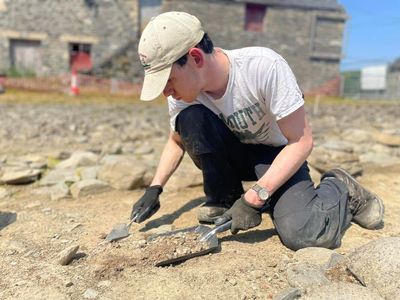
The Cistercian monks who founded the abbey were quite the entrepreneurs, taking advantage of the rural location to become self-sufficient, farming thousands of sheep and building roads and bridges to allow pilgrims and traders to visit the site. The abbey would have been a very striking and imposing building and you are still, today, able to admire the majesty of its iconic, carved west doorway. The plan of the church can still be clearly traced and, rather remarkably, some of the original richly decorated tiles from the abbey have survived intact. One of them, ‘Man with the Mirror’, depicts a medieval gentleman admiring himself in a mirror.
One of the foremost early Welsh historical sources, the Brut y Tywysogion, was written at Strata Florida and the site has many important connections with Welsh culture and identity. Dafydd Ap Gwilym, Wales’s most famous medieval poet, is buried in the churchyard, as are several medieval Princes of Wales.
Today, Strata Florida is made up of a variety of different elements, from the 12th century abbey ruins now in the guardianship of Cadw; to the early 19th century St Mary’s church built on the site of several original abbey chapels; through to the adjoining 17th century Mynachlog Fawr Farmstead.
In partnership with the the Princes Foundation, we are restoring the grade II and II* listed farmstead.
Contact:info@strataflorida.org.uk
Facebook pagehttps://www.facebook.com/StrataFloridaAFS/


UNITED KINGDOM
CCCU Culver Archaeological Project International Field School (East Sussex)
Dates: May 19 to June 27, 2025 Application deadline: March 1, 2025
Project website: https://www.culverarchaeologyproject.co.uk/ and https://www.culverarchaeologyproject.co.uk/field-school
Project application link: https://www.culverarchaeologyproject.co.uk/apply
An excavation in East Sussex exploring the historic landscape of the Sussex Ouse Valley.
The Culver Archaeological Project (CAP) involves the local community, students, trained archaeologists and volunteers in the investigation of the historic environment under the supervision of the project director, Robert Wallace, who holds a postgraduate degree in Field Archaeology from the University of Sussex, and corporate member of the Chartered Institute for Archaeologists (CIfA). CAP was founded in 2005 by Rob to investigate the historic landscape surrounding the Barcombe villa complex and has developed over the years to research the historical environment of the alluvial plain of the Upper Ouse Valley in the parishes of Barcombe and Ringmer.
Culver Archaeological Project is a long-standing research excavation of a rural Romano-British settlement in Barcombe, East Sussex. Working in partnership with Canterbury Christ Church University (CCCU), we offer comprehensive archaeological training. Participation in the field school includes:
• 2 weeks in class training in Canterbury, 2 weeks of hands-on training on-site in Sussex and 2 weeks supervised excavation.
• Training includes site formation processes, excavation and recording, environmental sampling, finds processing, geophysical survey, photography and more!


